
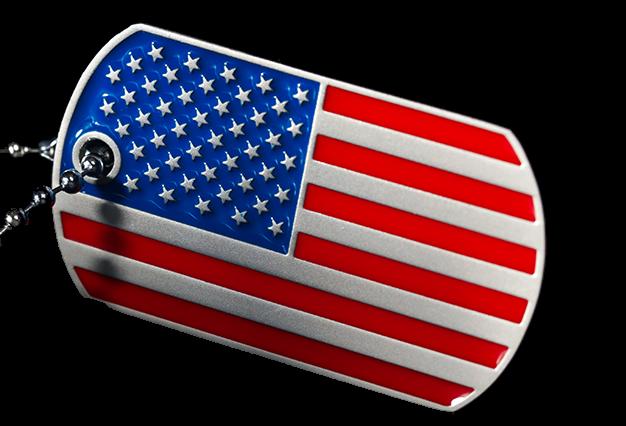
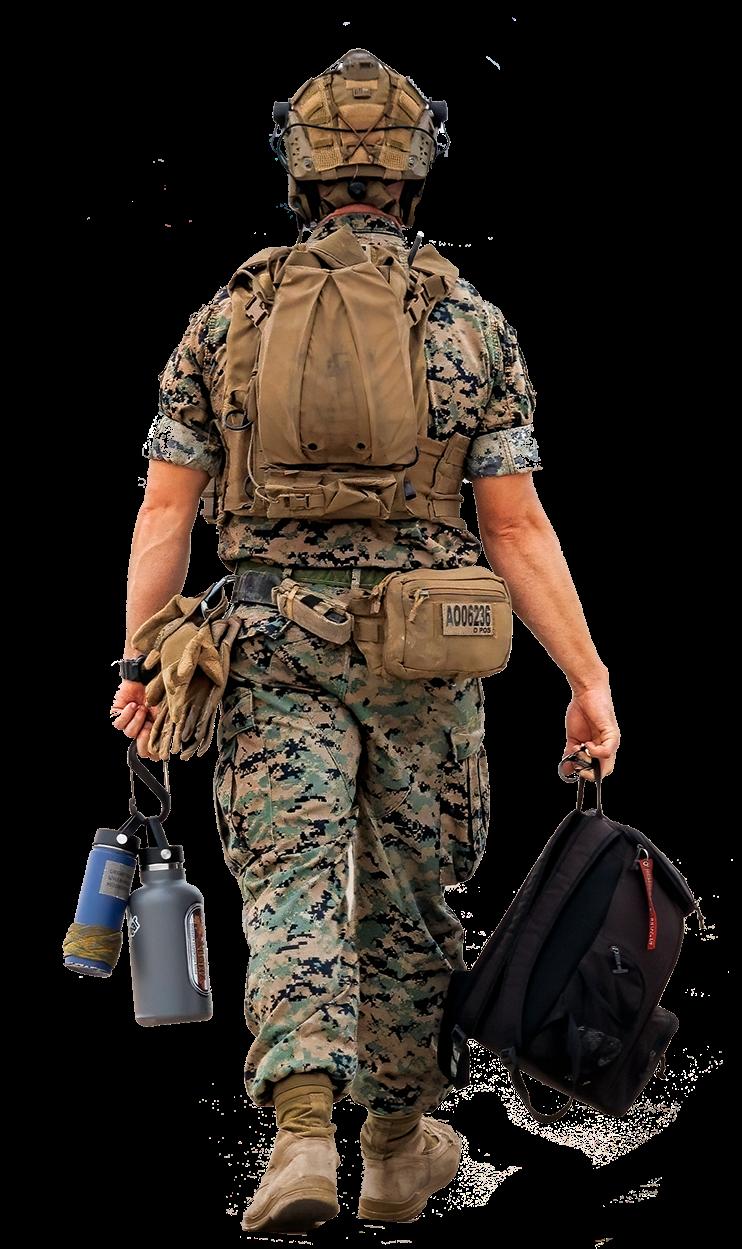
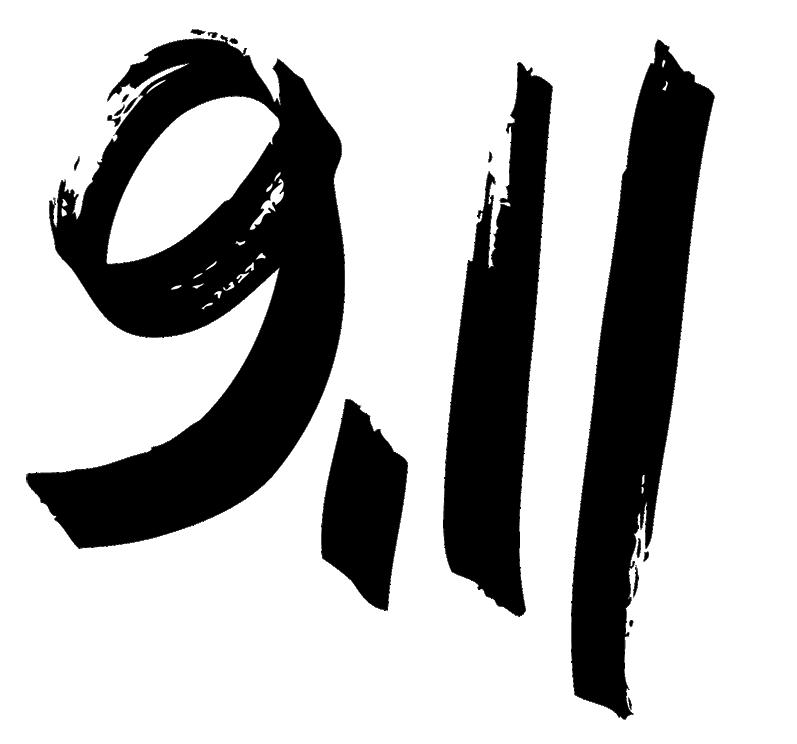











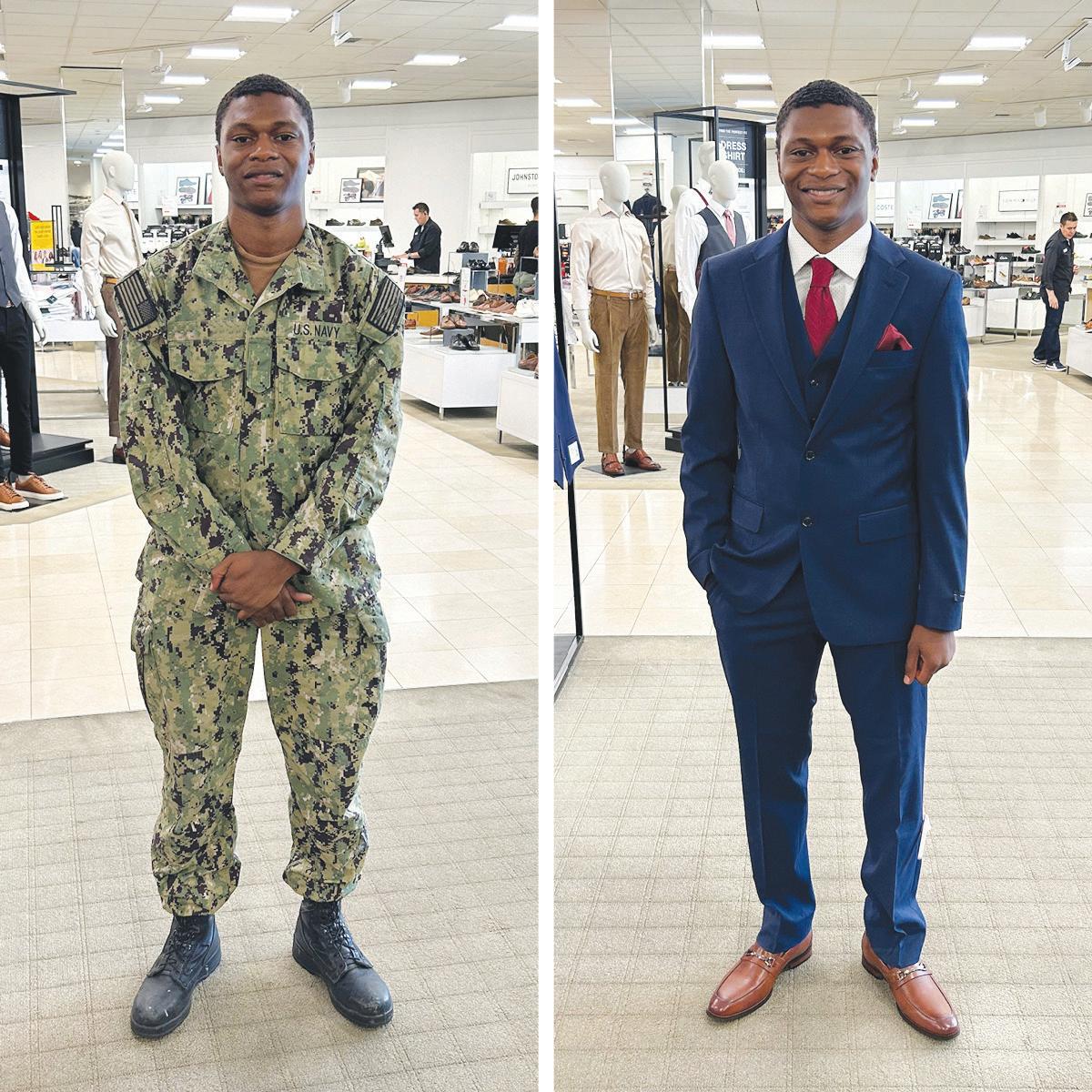












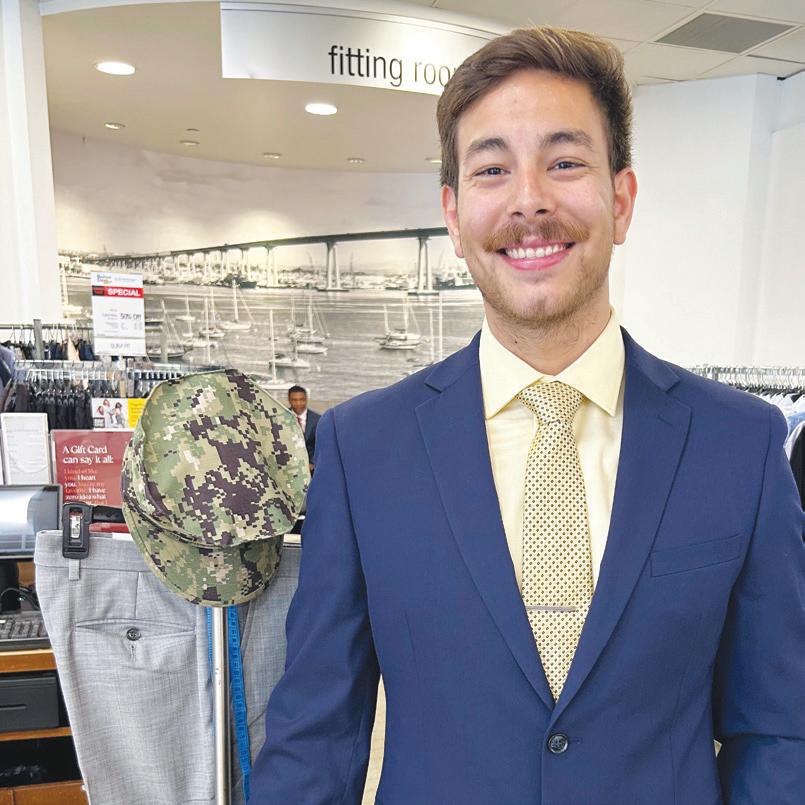

























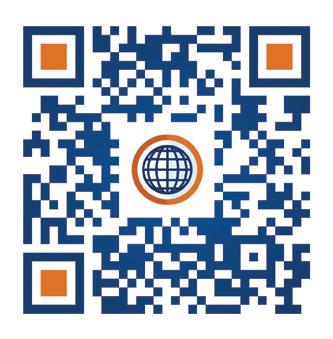



























































SDVM is a veteran-focused magazine throughout ALL San Diego & Southern California. It serves to assist all veterans, active military as well as their spouses and families.
It is the leading veteran magazine emphasizing resources & support and focusing on topics and issues facing today’s veteran community. SDVM focuses on resources, support, community, transition, mental health, inspiration and more...
The content is the driving force behind our magazine and the connection it makes with our veterans, service members, military families, and civilians.
The magazine is supported by the city of San Diego and a distinguishing list of veteran organizations & members, resource centers, coalitions, veteran advocates, and more. We are honored to share the work of so many committed and thoughtful people.
Despite all the challenges, our team has upheld their focus and let not one opportunity go to provide resources and support to our veterans & military personnel.
On behalf of our team, we wanted to take this moment to say THANK YOU to the readers and our military-veteran community for supporting our magazine. With that support we aim to make a difference and continuing to make a profound impact on the quality of life for our veterans, military personnel and their families.
If you want to catch up on the current and past issues, please visit: www.sandiegoveteransmagazine.com/archives
Mike Miller
Editor-In-Chief
mikemiller@sdvetsmagazine.com
www.sandiegoveteransmagazine.com
Publisher
Editor-In-Chief
Mike Miller
Monthly Columns
What’s Next In Transition
Eve Nasby
Human Resources
Paul Falcone
Franchise Dreams
Doug Dwyer
Successful Transitioning Stories
Dr. Julie Ducharme
Veterans in Business
Barbara Eldridge
Risky Business
Hadley Wood
Real Talk: Mental Health
Hope Phifer
PTSD: Reclaiming Control
Robert ‘Bob’ Cuyler, PhD
Legal Eagle
Kelly Bagla, Esq.
Veterans Chamber Commerce
Joe Molina
Midway Magic
David Koontz
Veterans Chamber Commerce
Joe Molina
Contributing Writers
Wounded Warrior Project
Disabled American Veterans
(In-House) Correspondents
Holly Shaffner
CJ Machado
Lori Noonan
mikemiller@SDVetsMagazine.com


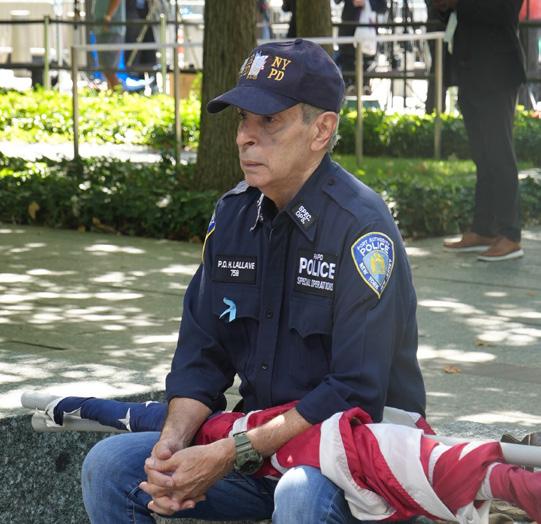




By: Holly Shaffner
In 1979, President Jimmy Carter signed a proclamation establishing National POW/MIA Recognition Day. The day is commemorated on the third Friday in September. Today, more than 80,000 Americans remain missing or unaccounted for from WWII, Korean, Vietnam, Cold and Gulf Wars and other conflicts. According to the Defense POW/MIA Accounting Agency, that includes 72,404 from WWII; 7,555 from the Korean War; 1,584 from the Vietnam War; 126 from the Cold War; and 5 from the Gulf Wars. The Agency continues the search for the missing, fulfilling the nation's promise to leave no service member behind.
Ceremonies can be found across the United States and no matter where they are held, these National POW/ MIA Recognition Day ceremonies share the common purpose of honoring those who were held captive and returned, as well as those who remain missing.
In addition to attending ceremonies, there is a POW Liberation Memorial at Miramar National Cemetery to visit. Tom Crosby was just 10 years old when he and
Honor Flight San Diego kept the spirit alive by hosting the largest WWII Veteran attended event in the country for National Spirit of ‘45 Day. The day was August 14th, 1945, when President Truman announced to the world that Japan had surrendered and WWII was over. This year is the 80th Anniversary of the End of WWII.
For the last five years, Honor Flight San Diego has organized the San Diego Spirit of ‘45 event. This year was especially historic and memorable with fortyeight WWII Veterans and four Rosie the Riveters in attendance. The oldest veteran in attendance was 109-years-young and served in the Battle of Midway. The WWII Veterans received their WWII Victory Medals they may not have received as they left service, and the Rosies received their Congressional Gold Medal that was awarded in Washington, D.C. in 2024. A short video of the WWII Veterans and Rosies can be viewed at: www.youtube.com/watch?v=a_z9Dg-nUzo
The ceremony was held at the San Diego Air and Space Museum located in Balboa Park. The event was also a reunion for the WWII, Korean War, and Vietnam War Veterans who have flown on their Honor Flight from San Diego. One of the favorite parts of the program is asking WWII Veterans “Where were you on August 14th, 1945, when the war ended?” Filmmaker CJ Machado
his family were taken prisoner in 1943 at the Santo Tomas Internment Camp in the Philippines. He was held prisoner until the Army’s 1st Calvary liberated the camp in February 1945, just before Japan’s “KILL ALL” order could be carried out. The Liberation Memorial was commemorated on National POW Day in 2011. Tom’s grandson was the model for the emaciated soldier breaking free of the barbed wire and darkness and into the Sunshine of Freedom” Tom joined the U.S. Navy and served during the Korean War. He also located his WWII U.S. Army Liberator, Lou Berger, and they remained friends until Lou’s passing.
President Carter’s proclamation still holds true today - “All Americans should recognize the special debt we owe our fellow citizens who, as prisoners during wartime, sacrificed their freedom so that we might enjoy the blessings of peace and liberty."

Filmmaker CJ Machado from Operation Call-To-Service produced a short video, with their answers, as a trailer for a future documentary. The video can be viewed by clicking on Where were you? www.youtube.com/watch?v=OIB8JYei6ZQ

September 2nd is another historic date as it marks the 80th Anniversary of signing of the Instrument of Surrender which formally ended the hostilities of WWII. It was a formal ceremony onboard the USS Missouri and attended by officials of the U.S., Allies, and Japan.
For more information about Honor Flight San Diego visit www.honorflightsandiego.org





Growing up in a lower-income area, Qalkidan Aklog was able to see firsthand the inequities of access to proper healthcare in her community. She told herself that when she grew up she was going to make a difference and ensure that healthcare would be a reality for all people.
Thanks to the USS Midway Museum’s emphasis on education, Qalkidan will be soon be starting the journey to achieve her dream. She, along with along with five other San Diego High School seniors, were awarded “Mac McLaughlin” scholarships to give their college careers a jump start.

“When I found out that I was being awarded a USS Midway Museum Mac McLaughlin scholarship, I felt not only grateful, but I felt empowered,” said Aklog,
who plans to study biomedical engineering at Harvard University in the fall. “This scholarship serves as a symbol of belief in me as a student and a person It made me realize that I have a story that is worth investing in. I am forever grateful for the generosity of this program that supports my academic endeavors, both financially and with check-ins.
In partnership with The San Diego High School Foundation, Midway awarded $5,000 scholarships to six San Diego High School seniors at the Foundation’s annual awards event held on the ship’s hangar deck.
Funds for these scholarships are raised by the museum’s knot team through the sale of handcrafted trinkets made by knot-team volunteers. The team sells handmade items like keychains, dog leashes and bracelets to Midway visitors throughout the year. Since
the knot team was established in 2007, the volunteers have generated more than $1.3 million that has been applied to the scholarships.
“The entire team of 40 members are very proud of awarding 162 students scholarships,” said Emory Bishop, who heads up the knot team and has been a museum volunteer since 2007. “Over the past 18 years, the knot team has trained more than 120 volunteers whose personal satisfaction is demonstrated by team producing more than 210,000 knotted items.”
The scholarship program is coordinated by the San Diego High School Foundation with scholarships going primarily to students who choose career fields that give back to their community such as nurses, teachers and other similar professions.
“Being a part of the San Diego High School Foundation and the USS Midway Museum’s scholarship program has been extremely rewarding for me as I’ve such a passion for students to be assisted on their upward journey post high school,” said Rae Riner, president of the Foundation who spent 41 years both teaching in the classroom and as a school administrator. “The students and their families express their appreciation in so many ways and part of our pride and pleasure comes from being a consistent and reliable addition to their world as is so often said, ‘it takes a village.’”
Scholarships recipients don’t have to go to a traditional four-year university or college. Students can also attend trade schools and community colleges.
“When my counselors told me I would be receiving the scholarship, I felt incredibly honored and recognized,” said Willa Ellison, who plans to study nursing at Southwestern College. “I knew that this scholarship was only awarded to a few students and I felt grateful that the Foundation and the Midway chose me as one of the recipients.”
A unique aspect of this scholarship is that students can reapply for up to four years as long as they are in school and maintain good grades.
“I am truly so grateful to have received the Mac McLaughlin scholarship,” said Aklog, who spent countless hours while she was in high school mentoring kids at her local library. “After seeing my fellow recipients, it was clear that the Mac McLaughlin scholarship supports students that not only excel academically, but also have made incredible strides towards bettering their community. Each of us carries the drive to create a true impact.”
Willa Ellison

“San Diego has a strong sense of community and opportunities like this allow younger generations to see what they are capable of,” said Ellison, who obtained her certified nursing assistant certification working at a local nursing home last summer.
“Being awarded this scholarship reminds me that I can be part of a bigger cause and that my efforts alone can greatly contribute to my community.”
Through the Mac McLaughlin scholarship, Midway plans to continue supporting deserving high school students fulfill their aspirations of higher education and becoming contributing members of the their community.
“San Diego High School, our Foundation and all members of our ‘village’ thank Midway from the bottom of our hearts for believing in and assisting the future leaders of tomorrow - the San Diego High School graduates,” said Riner, who has been the president of Foundation for seven years.
Along with Qalkidan and Willa, other scholarship recipients include Yoselynn Serrano Pena, Adelina Ramirez, Khloe Elevenzon and Sanjana Fitzgerald.
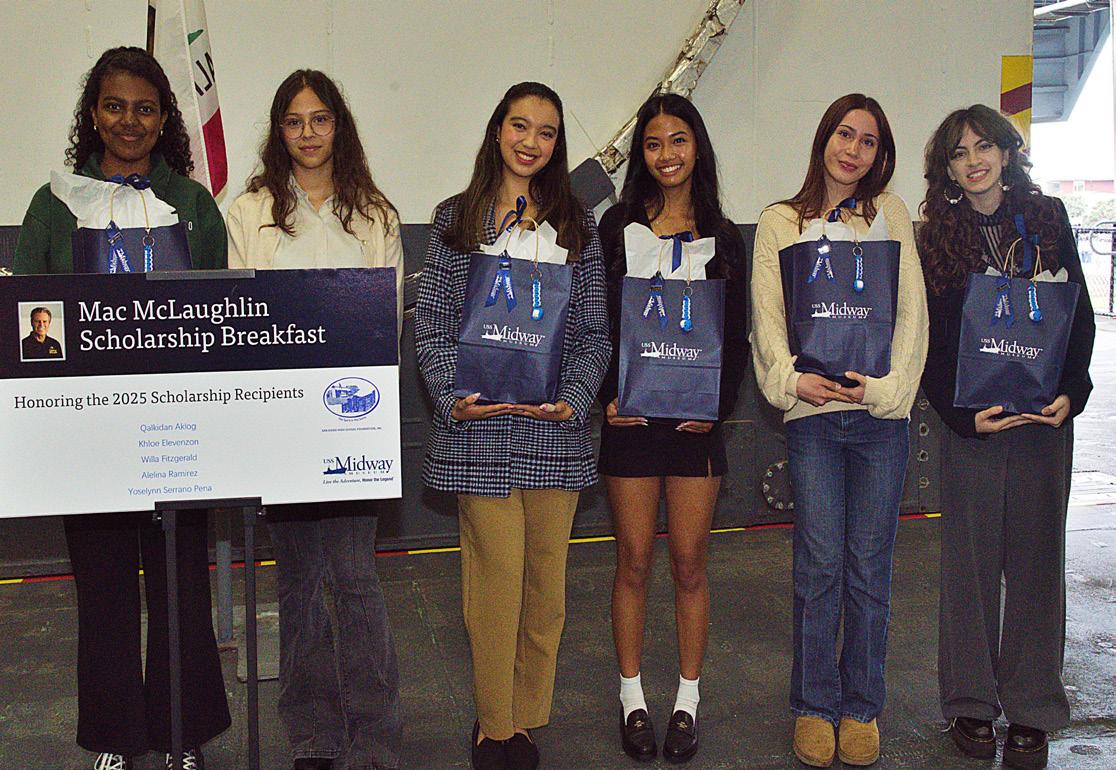

www.midway.org/contact/volunteer-opportunities
www.midway.org
By Kie Copenhaver CSA, RHIA, SHSS, RCFE www.agingwellpartners.com

“Why Am I Still Here?”
So many of my aging clients ask this question aloud to friends, family, and/or anyone else within earshot. And I never know quite how to answer this very personal and probing question. It’s a big question. It’s a haunting question. And to me, it’s a question that lies at the heart of “what is my purpose here on earth”. The answer differs for each of us and continues to change and morph as we age. What was our purpose in our 30s and 40s may no longer be what drives and fulfills us in our 70s and 80s.
According to the National Council on Aging, of the 46,000 suicides per year (in 2020), over 9,100 were attributed to those over the age of 65. Older adults tend to plan suicide more completely and carefully and are thus more likely to succeed (versus their younger counterpart). And aging men are more likely to commit suicide than aging women.
Suicide in older adults has been linked to a number of causes, such as episodes (often multiple) of grief caused by the loss of friends and family members, the loss or perceived loss of independence and/or autonomy, chronic illnesses and the pain or stress these can cause, declining cognitive ability, and financial stressors.


Any one of these things can cause stress and strife in an individual’s life and as we age, often these stressors come in multiples. My mother will often call or text me with the most recent obituary notice of a friend or acquaintance she has lost, complete with a photo from the local newspaper. It’s the first place she looks when she opens the paper. And it hurts her heart to know that many of her peers, colleagues, and friends are dying before she does. Furthermore, it’s likely a reminder of her own mortality, prompting her to silently ask why she is still here.
As the old saying goes, dying isn’t the hard part – it’s the living that’s the hard part. Those of us left behind have the hardest part, saying goodbye and remaining here to live out our years without that person by our side.
Suicide is a tough topic to talk or write about…yet this issue is partially dedicated to just that – suicide awareness and prevention. And while there are numerous warning signs of suicide – loss of interest in things previously enjoyed, avoiding social situations, giving away prize possessions, neglecting self-care such as grooming, bathing and taking medications, and becoming preoccupied with death – I think we all can internally sense when something is “off” with a close friend or loved one.
I think we all have an internal compass that signals us when something is not quite right for ourselves and others. And if we can stop and listen to what that inner voice is telling us, maybe we can begin to ask the kinds of questions necessary to get to the heart of what is making another sad. Ask the kinds of questions that probe into what is making another feel like they no longer want or need to be of this world.
Ask the kinds of questions that may feel hard and uncomfortable but are oh so necessary. And maybe, just maybe, we can help another find an answer to the question “why am I still here” that rings true and feels purposeful.


Gold Star Mother's Day is observed on the last Sunday in September, which will be Sunday, Sept. 28, 2024.
Gold Star Mother's Day honors the families of service members who have died while serving their country. The day recognizes the pain and sacrifice of the families, and the country's pledge to support them and remember the lives of the fallen.
The term "Gold Star" originated during World War I, when families would display flags with a blue star for each family member serving in the military and a gold star for each who died.
In 1928, 25 mothers who lost sons or daughters in the war formed American Gold Star Mothers, Inc. to honor their children, support veterans, and heal together. The organization's membership has since expanded to include mothers of those who died in other conflicts, as well as adoptive mothers.
Today, the United States military presents a Gold Star Lapel Pin to the immediate family of a deceased service member.
While all mothers of fallen service members are considered Gold Star Mothers, there's a veterans service organization they can join for support, known as the American Gold Star Mothers.
www.americangoldstarmothers.org
The group was started in 1928 by one woman -Grace Darling Seibold. Her son disappeared fighting in World War I, so she spent years working at veterans hospitals in hopes of finding him.
Seibold eventually learned of her son's death but continued her community service, organizing a group of mothers of the fallen so they could comfort each other and care for those veterans confined to hospitals far from home.
By Kate Sullivan Cohen Veterans Network www.cohenveteransnetwork.org


Women have served our nation with distinction in every branch of the military, supporting and contributing to every major conflict throughout our history. Currently over 2 million strong, women are the fastest-growing segment of the U.S. veteran population. However, with this growth comes a troubling reality. Since 2001, suicide rates among women veterans have risen over 55 percent. They now face suicide rates 92 percent higher than their civilian counterparts. And in 2022, women veterans were over 144 percent more likely to die by firearm suicide than their non-veteran peers.
Organizations that focus on supporting the mental health of women veterans play a pivotal role in combatting the suicide crisis, ensuring they receive the care they deserve. One such organization making a meaningful impact is Cohen Veterans Network (CVN), a national not-for-profit network of mental health clinics for post-9/11 veterans, service members, and their families. Women account for nearly 32 percent of CVN’s active duty and veteran clients—more than double the national proportion of female veterans. Since 2016, CVN has cared for over 89,000 clients and provided more than 799,000 clinical sessions.
The network recently released a report, supported by Face the Fight, that evaluates the current state of research and practice of lethal means safety—a vital aspect of suicide prevention—for military-affiliated women. The analysis highlights how traditional, genderneutral suicide prevention strategies have often failed to address the specific needs, experiences, and risks of women who serve. It underscores the importance of developing tailored, thoughtful approaches to address the distinct obstacles faced by military women.
“Every day, Cohen Veterans Network is dedicated to providing women veterans and service members with high-quality, accessible mental healthcare tailored to their unique needs,” said Dr. Anthony Hassan, president and CEO of Cohen Veterans Network.


cohenveteransnetwork.org/havehersix
This commitment is especially critical given the high rates of military sexual trauma (MST) and intimate partner violence (IPV) among military-affiliated women. Women who have experienced interpersonal violence face increased risks for suicidal thoughts and behaviors. Many live in households with firearms they don’t control, which can increase suicide and homicide risk in cases of ongoing IPV. Others may own firearms for self-protection but develop feelings of mistrust or institutional betrayal, making them less open to lethal means counseling and other critical interventions. Each unique situation requires care to navigate individual strategies to reduce risk.
To help confront these complex challenges and bring greater attention to the issue of suicide among military women, CVN is launching a public awareness campaign, "Have Her Six: Prevent Military Women Suicide," during September’s Suicide Prevention Month. The initiative, with a title inspired by the military phrase "got your six,"
meaning "I've got your back," aims to provide prevention strategies, and encourage greater support for women who serve.
"With the 'Have Her Six' campaign, we aim to extend our support beyond our clinics—equipping individuals with the knowledge and tools to help save lives,” said Dr. Hassan.
A key focus of the campaign is lethal means safety— promoting strategies that create time and distance from lethal means during a crisis. Research shows that while crises can feel overwhelming, they are often shortlived, lasting minutes or hours. During these periods, emotions can lead to impulsive actions. Limiting immediate access to lethal means creates a critical window to move past the peak of the crisis. This delay increases the likelihood of survival, allowing individuals to access coping skills and support systems that may feel out of reach in the moment.
One of the most effective ways to create this time and distance is through safe storage practices:
• Firearms: Storing firearms securely can significantly reduce the risk of impulsive actions. This includes ensuring firearms are unloaded, locked in a safe location, and stored separately from ammunition.
Tools such as gun safes, lockboxes, or trigger locks can provide an added layer of safety during a crisis.
• Medications: Prescription and over-the-counter medications should be kept in a secure, locked location. Proper disposal of expired or unused medications is also essential to prevent misuse.
• Other Lethal Items: Items such as chemicals or ropes should be stored securely, with barriers or locks in place to limit access.
By implementing these strategies, individuals and communities can play a vital role in suicide prevention for military women, fostering environments that prioritize safety and provide the time needed to seek help and support.
Learn more at cohenveteransnetwork.org/havehersix
Kate Sullivan is Director of Network Communications & Marketing at Cohen Veterans Network (CVN), helping veterans, service members, and their families learn about CVN’s services and access the care they need. She is an Emmy Award winner with a background in broadcast journalism, television production, and public relations.



According to the latest data from Veterans Affairs, in 2022, 6,146 veterans died by suicide in the United States. San Diego County has one of the largest military populations globally, with 110,000 active-duty service members. As of November 2023, the U.S. Census Bureau estimates that over 240,000 veterans reside in San Diego County, comprising approximately 6% of the county's population. Many active or veteran military members may be grappling with thoughts of suicide— our neighbors, family members, and loved ones—could be facing feelings of hopelessness. As a community, educating ourselves about suicide prevention can support those who protect our country.
The San Diego County Suicide Prevention Council (SPC) is a community-driven initiative dedicated to achieving a vision of zero suicides in our area. Our mission is to prevent suicide and mitigate its devastating effects on our community. We uphold core values that emphasize a public health approach to prevention, collaborative partnerships, evidence-based practices, and cultural and linguistic sensitivity.
The SPC offers free training on suicide prevention and intervention throughout San Diego County. One of our most popular programs is the Question, Persuade, Refer (QPR) training. This training equips participants with three simple steps anyone can learn to potentially save a life. Just as people are trained in CPR to save lives, QPR teaches individuals how to recognize the warning signs of a suicide crisis and how to question, persuade, and refer someone to appropriate help. Participants learn to identify critical warning signs such as expressions of hopelessness, depression, giving away valued possessions, talking about suicide, and securing lethal means. This training can be conducted both virtually and in person, and the SPC has already trained over 15,000 San Diegans in QPR.
Additionally, the SPC offers First Responder Suicide Prevention training, which parallels QPR but is tailored to the unique experiences of first responders. Given their daily encounters with mental health crises, it is essential that they are equipped to engage effectively with those in need. The First Responder ,
Suicide Prevention Training also assists First Responders to recognize the warning signs of suicide in and support their fellow colleagues.
The SPC partners with many community organizations that provide resources to Veterans such as Courage to Call, who is dedicated to improving mental wellness for Veterans, Active Duty, Reservists, National Guardsmen and their families via countywide outreach and education. They have a peer line that is open from 8am – 8pm as well as individual short-term, solution focused prevention oriented plans. The SPC also collaborates with the Steven A. Cohen Clinic which has several locations all around San Diego County. Their vision is to provide quality and affordable mental health care services for Veterans, Active Duty Military, and their families. They offer a wide variety of services such as childcare, education, employment, financial assistance, healthcare, housing, and more.
In addition to our free suicide prevention trainings, the SPC holds general meetings open to the public on the fourth Tuesday of every month and facilitates nine active subcommittees focused on various aspects of suicide prevention. These subcommittees include:
- Assessment and Evaluation: Reviewing and analyzing new suicide data.
- Higher Education: Addressing suicide prevention on college campuses.
- Means Reduction: Discussing strategies to reduce access to lethal means for suicide.
- School Collaborative K-12: Focusing on suicide prevention for school-aged youth.
- Postvention: Supporting families, loved ones and community after a suicide.
- Media: Promoting responsible suicide prevention messaging in the media.
- Training and Education: Enhancing our suicide prevention training programs.
- Faith: Addressing suicide prevention across various faith communities.
- Priority Populations and Communities: Tailoring prevention efforts to diverse and highly impacted communities.
The Priority Populations and Communities Subcommittee acknowledges that race, ethnicity, gender, culture, religion, and personal experiences profoundly shape how suicide prevention is perceived and addressed.
You are not alone

This subcommittee promotes dialogue among diverse communities to create tailored strategies for suicide prevention in San Diego County.
The Suicide Prevention Council is developing resource guides specifically designed for various populations, including a Military/Veterans Resource Guide. We are in the process of creating additional resource guides for Asian Pacific Islander, Latinx, and Lived Experience communities, among others.
Suicide prevention is a shared responsibility, and we can all help be part of the solution. It’s up to us to help save lives. Join the SPC efforts to help save lives, reach out to SPC staff at www.spcsandiego.org


By: Stanley Popovich www.managingfear.com
You are at the end of your rope and you can’t take it any much longer. You are in pain and you feel there is no hope. The first step you need to do is to seek treatment for your mental health issues. Do not make the decision to end your life when you are in these kinds of fearful situations.
With this in mind, here are seven reasons why suicide is not an option regarding your problems.
1. Things change over time:
Regardless of your circumstances, events do not stay the same. Everything changes over time. Knowing that your situation will improve will help give you the confidence that things are not as bad as they seem. In addition, your loneliness will not last.
2. There are always other options:
You may feel lost and confused, but the answers to your specific problems are out there. The key is that you have to find the answers; the answers to your anxieties and depression will not come to you. As mentioned before, the first step in finding the solution to your problem is to seek help from a qualified professional.
3. You can’t predict the future:
Remember that no one can predict the future with one hundred percent certainty. Even if the thing that you are afraid of does happen, there are circumstances and factors that you can’t predict which can be used to your advantage.
For instance, you miss the deadline for a project you have been working on. Everything you feared is coming true. Suddenly, your boss tells you that the deadline is extended and that he forgot to tell you the day before. This unknown factor changes everything.
4. Focus on the facts of your situation and not your thoughts:
When people are depressed, they rely on their fearful and depressing thoughts. Your fearful thoughts are exaggerated and are not based on reality. When you are depressed, focus on the facts of your current situation and not on what you think. Do not assume anything regarding your current situation.

5. Worrying makes things worse:
A lot of times, our worrying can make the problem even worse. All the worrying in the world will not change anything. All you can do is to do your best each day, hope for the best, and when something does happen, take it in stride. The key is not to get upset and learn how to manage your negative thoughts.
6. Go to the hospital when it is that bad:
If things are so bad that you are unable to function, drop everything and go to your local hospital or crisis center immediately. The people at the hospital or crisis center will take care of you right away.
7. No situation is hopeless:
There are many people and organizations that are willing to help you, but you must be willing to take advantage of this help. Regardless of your situation, take advantage of the assistance that is around you. Every problem has a solution. You just have to find it.
By: Lori Noonan, Chief Growth Officer, Veterans Bridge Home | In-house Contributor, Homeland Magazine & San Diego Veterans Magazine
Each September, our nation observes Suicide Prevention Awareness Month. It’s a time to shine a light on the often-invisible struggles faced by millions of Americans, including those who have worn the uniform. For veterans, the transition from military to civilian life can sometimes bring isolation, stress, and a loss of identity — all of which can increase vulnerability to depression and suicidal thoughts.
Behind every statistic is a person, a family, and a community. And while numbers are important, what matters most are the stories of resilience and connection.
"One evening, I sat alone on my couch, accompanied only by my dog, feeling overwhelmed by depression... I reached out to the VA crisis text line... but the interaction felt impersonal... I went to bed uncertain, just hoping to make it through another day."
That night could have ended in tragedy. Instead, it became a turning point.
The next morning, a care navigator — a fellow veteran from Veterans Bridge Home — called. His message was simple but powerful: you are not alone. With consistent encouragement, this veteran began therapy that felt relevant, found stable employment, and even enrolled in college courses. He still lives with depression and anxiety, but he no longer lives without hope.
This story is one of many that show us the same truth: connection saves lives.
Suicide prevention isn’t only about crisis intervention. It’s about creating communities where people feel seen, heard, and valued long before they reach a breaking point. For veterans, this often means peerto-peer support — conversations with others who “get it.” Research consistently shows that when veterans connect with peers, they’re more likely to seek and stick with care.
But connection isn’t just the job of professionals. It’s something we can all do. A phone call, a cup of coffee, or a simple check-in can be life-changing. Sometimes it’s enough to remind someone they’re not walking this path alone.
This Suicide Prevention Awareness Month, we all have a role to play. Here are four ways to move from awareness to action:
• Check in: Reach out to a veteran, a friend, or a neighbor. A small gesture can open the door to healing.
• Know the signs: Withdrawal, hopelessness, or giving away possessions may be warning signals. Trust your instincts.
• Share resources: Veterans Crisis Line—Dial 988, then press 1, or text 838255
• Support organizations: Local and national nonprofits are doing vital work to connect veterans and families with care.

This September, let’s recommit ourselves to building stronger communities where every veteran — and every person — knows their life matters. Suicide prevention is not the work of one agency or one month of awareness. It is a collective mission, lived out every day in small acts of kindness, listening, and connection.
Together, we can change the narrative from despair to hope.
By: Robert ‘Bob’ Cuyler, PhD Psychologist and Trauma Expert

This month’s San Diego Veterans Magazine theme is September 11 - Never Forget. Of the many aspects of 9/11 that we will never forget, what are some aspects to recall of this tragedy from the perspective of a psychologist?
The first that comes to my mind is that 9/11 was the first event since Pearl Harbor to have immediate impact on our nation. A key difference, however, was that 9/11 occurred in a vastly different information and media environment and was viewed in real time by the vast majority of Americans. That real time viewing was followed by endless coverage of the aftermath, as well as repeated video of the airplanes impacting the towers. I remember hurrying home from the office, approaching downtown Houston, and scanning the skies for planes aimed for our skyscrapers. I remember also seeing the video of a plane hitting a building and wondering, startled, if this was yet another attack.
In my view, Americans’ understanding of trauma changed that day. Post-Traumatic Stress Disorder (PTSD), which was largely thought of as a military condition, suddenly was applicable to all of us. As I noted in a prior column, a recently published study on the effects of 9/11 survivors sheds some important light on the trajectory of trauma.
That study followed over 12,000 trauma-exposed individuals over 20 years following the World Trade Center attacks. Both free treatment and periodic follow-up interviews were offered. Between 16-34% of those studied had few or no symptoms, while clinically elevated PTSD scores were noted for 8 to 15% of participants. I reported that my takeaway from this research was mixed, with positives and negatives. Troubling is the persistence of severe symptoms for about 10% of these 9/11 survivors 20 years later.
This speaks to the limitations of the treatments available at the time, especially in the first several years, and the need for new evidence-based treatment innovations. A positive is that participants with positive coping strategies did better. An active social network, employment, structure in daily life, focus on improving sleep quality, and stress management habits were all ingredients in improvement

The 9/11 tragedy happened on such a massive scale, we began to think differently about the scope of trauma. The most directly impacted were the inhabitants of the towers, those in very close proximity, and first responders. Rippling outward were the New Yorkers who evacuated on foot, knew someone who was killed or injured, or who had some exposure to the toxic cloud. The next circle was the region who surrounded the towers and the Pentagon. Beyond that were the rest of us.


Dr. Cuyler is chief clinical officer of Freespira, an FDA-cleared non-medication treatment that helps people with panic and PTSD manage their symptoms by learning how to regulate their breathing. www.freespira.com


— Barry C., 58 year old Veteran




























By Dr. Amber Deckard, PsyD
Military life brings experiences and traumas that are unlike any other. For some, military training or operational demands result in traumatic brain injuries. For others, the trauma is related to prolonged hypervigilance or the psychological toll of combat. As a Marine veteran working in trauma-informed care, I also see the effects of moving from deployment to home life.
These stressors often present themselves in veterans through a combination of cognitive, emotional, and physical factors. If you only treat what you can see, though, you cannot achieve lasting recovery. Just like an arborist knows that caring for the leaves and branches won’t help a tree flourish unless the roots are also tended to, patients must first work with clinicians on healing what lies beneath the surface.
Assessment Programs (NAP) –Inspecting
These programs use tools to identify the causes of issues beyond surface-level symptoms – such as neuroimaging, cognitive testing, and psychiatric evaluation – increasing insight into what truly drives a veteran’s struggles, allowing mental health professionals to treat causes, not just effects.

Neurorestorative care enriches the brain’s environment –the “soil” – to foster healing and growth. Clinicians tap into the brain’s capacity to rewire (neuroplasticity) and generate new cells (neurogenesis). Alongside neuro-focused treatments, it’s also important to support whole-person wellness through programing such as nutritional counseling, physical fitness, spiritual care, and medical and psychiatric monitoring.
Finally, progress must be tracked with repeated psychometric tests and follow-up neuroimaging. This “before and after” data helps clinicians see real changes in brain function, cognitive skills, and emotional wellness –objective evidence that the roots are getting stronger and the canopy is recovering.
Among the Veterans seen in our Neurocognitive Assessment Program at Caron was a career service member in their mid-60s, whose history reflected decades of repeated combat deployments and longstanding polysubstance use.
Cognitive testing confirmed deficits in executive and motor functioning, and neuroimaging tools showed patterns consistent with the effects of trauma, substance use, and head injury. These findings were integrated into a care plan that included abstinence from substances, traumafocused psychotherapy, daily cognitive training, nutritional and exercise interventions, and neurorestorative therapies.
Over the course of treatment, progress was tracked showing significant gains across nearly every domain assessed. The Veteran reported reduced depression and anxiety, improved motivation, greater cognitive clarity, and the ability to apply new coping skills learned in therapy.
The need for root-level care becomes clear when we look at relapse statistics: nationally, 40–60% of individuals with substance use disorders relapse within one year. For veterans specifically, rates are even higher – one study found approximately 94% of veterans relapsed following discharge from outpatient or residential treatment.
In the end, taking care of the brain is taking care of the whole warrior.

Dr. Amber Deckard, PsyD is a Marine Corps Veteran and Director of NeuroPsychological Services & the Neurocognitive Assessment Program (NAP) at Caron Treatment Centers www.caron.org/our-team/dr-amber-deckard






For many of our nation’s warriors, the battle doesn’t end when they return home. The invisible wounds of war—post-traumatic stress, traumatic brain injuries, anxiety, and depression—can be just as debilitating as any physical injury. One San Diego-based nonprofit is stepping up in a powerful way to help those warriors reclaim their lives: Freedom Dogs.
Founded in 2006, Freedom Dogs provides specially trained service dogs to support both active-duty military and veterans as they navigate the long road to recovery. These dogs do more than offer companionship. They are trained to perform critical tasks like interrupting panic attacks, easing nightmares, creating physical space in crowds, and providing a calming presence during stressful medical appointments.
What sets Freedom Dogs apart is its direct partnership with the Wounded Warrior Battalion at Camp Pendleton. It is the only accredited service dog organization embedded with active-duty military, allowing it to address needs in real time and customize training for each warrior. The nonprofit also supports veterans as they transition to civilian life, helping them regain independence and experience renewed hope.
“Our model is flexible because healing looks different for everyone,” explains Executive Director Peggy Poore. “Some warriors complete the program and continue on without a dog. Others are eventually matched with a lifelong canine partner. Some come back months or years later when they’re ready for that next step.”
Freedom Dogs operates on a progressive training model that includes warriors early in the service dog’s development. These in-training dogs become therapeutic tools, while participants—known as Freedom Dogs partners—take part in the dog’s education. The process builds confidence, emotional regulation, and a renewed sense of purpose for the warrior.
“Freedom Dogs gave me my life back,” says retired Staff Sgt. Richard Gonzalez, a Purple Heart recipient. “Before I met my dog, I wouldn’t leave my house or go into crowds. I was in a very dark place. But that dog looked at me like I mattered—and suddenly, I did.”
Freedom Dogs recognizes that every warrior’s path is different. Some dogs are eventually placed permanently through the Partner for Life program, with the organization funding the dog’s lifetime care. Others remain with trainers and accompany warriors only during therapy sessions or transitional periods. Each match is made based on the warrior’s personality,



lifestyle, and clinical needs—ensuring the bond is rooted in trust and mutual healing. The impact of these bonds can be life-changing. Veterans who once struggled to leave their homes are now rebuilding relationships, pursuing careers, and reconnecting with the world around them—with a dog by their side, or thanks to the strength they gained during the program.
Behind every Freedom Dog is a team of dedicated trainers and volunteers—and it starts with the Puppy Raiser Program
These volunteers provide early socialization and basic training in a loving home environment, helping puppies gain confidence and discipline before entering advanced service training.

Recent changes in federal funding have left many service dog programs under increased financial pressure. Freedom Dogs, which provides all services at no cost to participants, relies on community donations, fundraising events, and corporate sponsorships to sustain and grow its impact.
“The cost to train and support each dog through its lifetime can exceed $50,000,” says Poore. “We never want to turn away a warrior in need—but to keep that promise, we need ongoing support from the community.”
Ask anyone involved with Freedom Dogs and they'll tell you: it’s about far more than training dogs. It’s about walking alongside those who’ve sacrificed for our freedom—offering skilled support, healing, and dignity at every step.
“These volunteers give our dogs their very first experiences in trust, responsibility, and structure,” says Poore. “They are truly the unsung heroes of the Freedom Dogs family.”
Puppy raisers receive full training and support from the organization. It’s a powerful way for individuals and families to contribute directly to a warrior’s healing journey.
Freedom Dogs meets each warrior where they are—at their pace, on their terms—for as long as they need. Because healing isn’t one-size-fits-all. And every warrior deserves a path that works for them. To learn more, visit www.freedomdogs.org.
September is National Suicide Prevention Month. If you or someone you know is in crisis or at risk, dial 988 — the Suicide & Crisis Lifeline.




August 2025 Issue
- Navigating Education and Career
- Military To Civilian Transition Bridge
- What’s Next: From Battlefield to Boardroom
- Mental Health in the Private Sector

- Overcoming Roadblocks (Finding Employment)
- Veterans: The AI Revolution Is Here
- The Fear of Self Promotion
- Doing Business with the Government
- Shark Infested Waters
- Careers in Law Enforcement


For editorial & monthly columns regarding transition, career advice, tips, workshops, transition to education, entrepreneurship, straight-forward legal tips for military and veteran business owners and more, visit Veterans In Transition. sandiegoveteransmagazine.com/category/veterans-in-transition


By Carly Donner


Getting into cybersecurity has been a rewarding but challenging journey for me, especially while balancing a full-time career in the military. My role involves overseeing various support functions—everything from admin to legal, facilities, and IT—across six states and 265,000 square miles. Yet, despite the heavy responsibility, I found myself drawn back to the technical side of my primary Military Occupational Specialty (MOS) in Communications, which I hadn’t been able to practice much in my current billet. That’s why I decided to pursue a master’s degree with a focus on cybersecurity.
For anyone looking to enter the field of cybersecurity, credentials are key. My program at Western Governors University (WGU) embedded industry-recognized certifications into the curriculum, which was invaluable. For instance, earning the EC-Council Certified Ethical Hacker certificate was part of my program, and it not
only gave me new skills but also renewed my existing CompTIA certifications. These kinds of credentials are essential for staying competitive in the job market, whether you’re aiming for a role in the military or the civilian sector. I’d recommend students pursuing cybersecurity prioritize certifications like CompTIA Security+, Certified Information Systems Security Professional (CISSP), and Certified Ethical Hacker (CEH). These are recognized across the industry and give you a solid foundation on which to build your career.
Balancing work and school can be challenging, especially with a demanding job like mine. That’s why I went with a competency-based program that allowed me to work toward my degree at my own pace. With constant travel and unpredictable hours, fitting in homework often meant late nights in hotel rooms or long weekends spent studying. Since I didn’t have to attend scheduled lectures or group projects, I could carve out time to study based on my other commitments.
Since completing my degree, a lot of doors have opened. The certificates I earned during the program keep me competitive in my current MOS and will be a huge asset when I return to the fleet. I’ll be able to step back into collateral billets like Information System Security Officer or System Admin, making me more valuable to my unit. Beyond the military, this degree has set me up for a smooth transition into civilian cybersecurity roles whenever I decide to leave the service.
The need for cybersecurity professionals is growing, and having both practical experience and academic credentials makes me feel confident about my future.
“For military members and veterans considering continuing education, I’ll say this: it is hard, but it is also easier than you think even with the demands of service life. Plus, the payoff is so worth it. Not only will you gain knowledge and skills that make you more effective in your current role, but you’ll also be preparing yourself for life after the military. Take advantage of educational benefits like Tuition Assistance and the GI Bill and keep pushing yourself—you’ll be amazed at what you can achieve.”
- Carly Donner







Earn Your Degree Anytime, Anywhere. Flexible, Affordable, and 100% Online!*
Military life comes with constant changes—deployments, PCS moves, and unpredictable schedules. But your education doesn’t have to wait. At Los Angeles Pacific University, we understand the unique challenges military members, spouses, veterans, and dependents face. That’s why our fully online programs offer the flexibility you need to study at your own pace, no matter where life takes you. Whether you’re on base, deployed overseas, or at home, your degree moves with you!
• 100% Online & Flexible: Learn from anywhere, on a schedule that fits your life.
• Maximize Your Benefits: Use GI Bill®, tuition assistance, and spousal benefits.
• Earn Credit for Your Experience: Take advantage of CLEP, DSST (DANTES), and AARTS/JST to turn your military training and knowledge into college credit.
• Fully Accredited: LAPU offers fully accredited associate, bachelor’s, and master’s degrees through the WASC Senior College and University Commission (WSCUC).
• Faith-Based & Supportive: Dedicated military-friendly success coaches who care about your journey.
Your Future Starts Today! Take the Next Step
*At this time, LAPU is unable to offer distance programs or courses to students residing in the following states and districts: Alabama, Arkansas, Connecticut, the District of Columbia, Indiana, Kansas, Maryland, Minnesota, New Mexico, New York, North Carolina, Oregon, Wisconsin, and Wyoming.



Military Friendly School & Spouse School

By Maurice D. Wilson, MCPO USN (Ret), President/Executive Director, NVTSI.org, and 1st Vice President, San Diego Veterans Coalition Board of Directors

As someone who served over 25 years in the Navy before retiring, I've been exactly where you are if you're thinking about transition. I've experienced firsthand the anxiety, uncertainty, and overwhelming nature of leaving the only adult life I'd ever known.
Every year, over 200,000 service members like us transition from military to civilian life, yet an alarming 80% struggle with rebuilding their lives and finding meaningful employment. Even more striking—66% of us leave the military without a job lined up. This isn't just a statistic—it's a national crisis hiding in plain sight, affecting our fellow veterans, neighbors, and brothers and sisters in arms who served our country with honor.
The Root Cause: More Than Just Job Training I learned the hard way that traditional transition programs focus on resume writing and job placement, but they miss the deeper psychological reality of our military-to-civilian transition.
The problem isn't that we lack skills—Lord knows we have skills in abundance. The real issue is that we lack civilian self-direction.
Understanding Our Reticular Activating System (RAS) Military service fundamentally rewires our brain's filtering system—what neuroscientists call the Reticular Activating System (RAS). This neurological network processes 2 million bits of sensory information per second, filtering it down to the 134 bits that reach conscious awareness. During our military service, our RAS becomes programmed for hierarchy, external direction, and mission-focused thinking. When we separate without intentionally reprogramming our RAS for civilian goals, we experience what I call "purpose anxiety"—a psychological phenomenon that peaks during the transition period. We've spent years— decades in my case—being told what to wear, when to eat, where to live, and what our mission is. Suddenly,
we must make thousands of daily decisions withoutthat external structure. It's no wonder so many of us feel lost.
The Three-Pillar Challenge
Through my work with over 3,500 veterans at NVTSI, I've identified three critical areas where we consistently struggle:
1. Create a New Identity: "Who am I now without my rank, uniform, and military title?" I certainly wrestled with this fund mental question of self-definition beyond military service.
2. Find My New Purpose (Mission) After Service: "What is my civilian mission and why does it matter?" After decades of clear military missions, we need to discover what drives us in civilian life.
3. Align My Occupation with Who I Am: "How do I ensure my civilian career reflects my true identity and purpose?" This goes beyond just finding any job—it's about finding meaningful work that matches our core values and new civilian identity.
The Effects: A Cascade of Challenges
When we aren't properly prepared for transition, the effects ripple through every aspect of our lives—and I've seen this pattern thousands of times:
• Mental Health Crisis: Nearly 18 veterans die by suicide daily, with rates over twice as high as nonveterans
• Employment Struggles: Despite our leadership experience and proven skills, many of us remain underemployed or frequently job-hop
• Relationship Strain: 86% of military spouses report negative impacts on their marriage during transition
• Long-term Support Dependency: 44% of veterans still require assistance more than eight years after separation
• Identity and Purpose Loss: Too many of us report feeling "lost" and "disconnected" from our sense of purpose
The most telling statistic: 66% of us leave the military without employment lined up. This isn't because we lack capability—it's because we lack the civilian self-direction skills to navigate the job market effectively while staying true to our authentic selves.
The NVTSI Solution: Addressing Root Causes with Scalable Innovation
At NVTSI, I've worked with my team to develop a comprehensive ecosystem of programs that address transition challenges at their neurological and psychological roots:
Our flagship REBOOT Workshop™ is a three-week, cohort-based program that I'm proud to say has helped over 3,000 transitioning service members, veterans, and spouses. Unlike traditional programs that focus on external skills, REBOOT works from the inside out:
• Identity Development: Helping us create a new civilian identity that honors our military service while embracing who we're becoming
• Purpose Discovery: Guiding us to identify our new civilian mission and the values that will drive our postservice life
• Career Alignment: Teaching us how to align our occupation with our authentic identity and purpose rather than just taking any available job
As I often tell workshop participants, "The workshop validates your experience and teaches you how to manage thoughts and develop social cohesion for your return home."
To learn more visit www.nvtsi.org or to sign up for the next REBOOT Seminar visit www.nvtsi.org/events/categories/seminar


Maurice D. Wilson, MCPO USN (Ret), is President/Executive Director of National Veterans Transition Services, Inc. (NVTSI) and 1st Vice President of the San Diego Veterans Coalition Board of Directors.
After over 25 years of naval service, Maurice founded NVTSI in 2010 to assist veterans in achieving successful transitions from military service to civilian life across all life domains. For more information about our programs, including the groundbreaking STARR program and Veteran Match system, or to enroll in a REBOOT Workshop, visit www.nvtsi.org or call 619-822-2701 x 194
By Eve Nasby eve@infused.work


The transition from military to civilian workforce has always been treacherous terrain—a no-man's land where decorated veterans stumble through unfamiliar corporate landscapes, armed with skills they struggle to translate on traditional resumes. But in this high-stakes arena of career transformation, one organization has emerged as the insider's secret weapon: VetCTAP
Like a seasoned guide leading expeditions through uncharted territory, VetCTAP has quietly built a reputation that spreads through military networks with battlefield-level efficiency. Seventy-five percent of their participants arrive through word-of-mouth referrals— the kind of organic growth that makes Wall Street analysts take notice. Another 10% find them through targeted Google searches, while 15% discover the program through veteran service organizations. These aren't vanity metrics; they represent the hard currency of trust in a community where credibility gets earned through results, not marketing budgets.
The Confidence Currency
Janis Whitaker, VetCTAP's co-founder, initially believedthey operated in the skills business. Like any shrewd entrepreneur, she thought her value proposition lay in delivering tactical advantages—resume writing, interview techniques, networking strategies. But market feedback revealed a different story entirely.


Jarrod Rothman's experience illustrates this transformation perfectly. "VetCTAP was one of the programs that really stood out," he explains. "I walked away with refined tools, sharper communication skills, and a better understanding of how to market my military experience." His journey from job hunter to Axon employee in just a few months demonstrates the program's ability to bridge the confidence gap that derails so many military transitions.
The most costly mistake veterans make during transition isn't tactical—it's strategic. "A lot of people think all they need to do is put a resume together and send out applications, and because they're a veteran, companies will hire them," Whitaker observes. This represents a fundamental misunderstanding of civilian hiring markets, where military credentials alone don't guarantee employment outcomes.
The second critical gap involves translation—specifically, the art of converting military experience into civilianrelevant language. Veterans arrive at VetCTAP fluent in military jargon but struggling to communicate their value proposition in terms that civilian hiring managers understand. It resembles having a PhD in nuclear physics but being unable to explain basic chemistry concepts—the knowledge exists, but the communication framework is missing.
"The number one feedback we get is about confidence," Whitaker reveals. "We're actually selling confidence— confidence in the process, confidence in their skills, confidence that they can get a new career."
This pivot from skills to psychology represents a fundamental shift in understanding the veteran employment challenge. While other organizations flood the market with technical training and career workshops, VetCTAP discovered they were addressing something more nuanced: the psychological barriers that prevent capable veterans from successfully positioning themselves in civilian markets.
VetCTAP's approach follows a methodical, building-block methodology that mirrors military training principles. Eight modules spread over four weeks, delivered virtually on Monday and Wednesday evenings to accommodate working schedules. The program's global reach extends to participants logging in at 4:30 AM from Africa—a dedication level that speaks volumes about the program's perceived value.
"Our modules are set up in a particular order that builds on each other," Whitaker explains. "Week by week, the lightbulb goes on. At the end, the confidence shines."
This sequential structure creates compounding returns—each module strengthens the foundation for subsequent learning, generating momentum that carries participants through the challenging transition period.
Eric Ramirez, now with Workshops for Warriors, captures this progression perfectly: "VetCTAP reminded me of my worth outside the uniform and gave me the tools to move forward with confidence. Your next career might show up when you least expect it, but it will show up."

VetCTAP operates in a specialized niche—senior military personnel with 10+ years of service and military spouses seeking professional careers, typically 38 years and older. This demographic represents high-value human capital: experienced leaders with proven track records in high-pressure environments. The program maintains consistent demand, with workshops filled months in advance—a supply-demand imbalance that suggests significant market opportunity.
Funding comes through grants, corporate sponsorships, and their signature fundraising event: an annual golf tournament at Marine Memorial Golf Course, Camp Pendleton. (https://vetctapgolf.org) See Page 57 This diversified revenue model provides stability while maintaining no-cost access for participants—a strategic decision that eliminates financial barriers for veterans during vulnerable transition periods.
VetCTAP's success metrics extend beyond placement rates to transformation outcomes. The organization tracks not just job acquisitions but confidence building and network development. In an economy where veteran unemployment remains a persistent challenge, VetCTAP has identified and addressed the psychological infrastructure that enables successful transitions.
For veterans ready to navigate the civilian career landscape, VetCTAP offers more than training—it provides the confidence currency necessary to compete in today's job market. Registration is available at vetctap.org, but early booking is essential in this high-demand environment. The 2026 calendar posts in November.

In the transition from military to civilian careers, VetCTAP has proven that sometimes the most valuable commodity isn't what you know—it's believing in what you're worth. vetctap.org

Finding a job in the civilian workplace may seem easy at first. After all, you have learned skills, practiced leadership and demonstrated initiative that will make you successful wherever you go.
The reality, though, is that it can be difficult. In fact, it can be downright depressing demotivating and you may feel totally disillusioned. We can help.
In our Veterans In Transition archives you will find helpful and informative articles about what’s next in transition, veterans in business, career, advice, tips, workshops, transition to education, entrepreneurship, veteran franchises, legal tips & resources for veteran businesses and much more...
For assistance in your journey please visit: SDVMagazine-Veterans-In-Transition sandiegoveteransmagazine.com/category/veterans-in-transition
By Paul Falcone PaulFalconeHR.com


This September issue is dedicated to mental health, which is a deeply important and multifaceted issue. As you transition from your military career into the private sector, it’s important that you understand the basics of “mental health and wellbeing” as seen from the corporate perspective.

First, the largest driver of awareness surrounding mental health in the private sector is Gen Z. The Gen Z “Zoomers” were born around 1997, and the oldest among them are now 28 years old. What stands out most about Gen Z is that it’s identified as loneliest, most isolated, and most depressed generational cohort on the planet. . . even more so than retirees in retirement homes. Why? Because Gen Z is the first truly “digital” generation: its members don’t know a time before computers, the world wide web, cell phones, and social media. As such, they sometimes suffer from a lack of social connections and interpersonal relationships that all generations that preceded them got to enjoy.
It’s exactly this lack of interpersonal connection and relationships that have caused the mental health challenges that we see affecting a large segment of the workforce, and it’s the primary reason why companies large and small invest in employee wellbeing initiatives to help the younger generation thrive, focus on teamwork, develop mentors and friends in the workplace, and have resources at their disposal to help them cope with a fast-changing world that feels like an onslaught of AI, global climate change, political upheaval, and wars on multiple fronts.
The military environment is intense and requires immense resilience. This can sometimes lead to lasting impacts on mental health, especially after service members return home and the structured military life is replaced by a less predictable civilian world. Some of the most common mental health challenges include PTSD, depression, substance use disorders, traumatic brain injury, and other “invisible wounds” that don’t fit neatly into any one category.
Leaving the military is a huge life change. Here are some friendly tips to help you make a successful transition:
1. Network, Network, Network: Connect with other veterans and veteran-friendly organizations. These networks can offer invaluable guidance, support, and job leads. Many veterans have already walked this path and can share their experiences and help you find the right fit. Don’t be afraid to ask questions!
2. Find Your Purpose (Again): The military provides a strong sense of purpose and camaraderie. In civilian life, you may need to find that purpose in a new way. Consider joining community groups, volunteering, or pursuing hobbies that fulfill you.
3. It's Okay to Seek Help: There's no shame in needing support. Just as you would see a doctor for a physical injury, it's a sign of strength to seek help for your mental health. A professional can provide tools and strategies to help you navigate this transition.
Here’s a list of specific, easy-to-access resources that you might want to take advantage of:
• Veterans Crisis Line: This is a vital resource for any veteran or service member who is in crisis or considering suicide. They can call, text, or chat online with a caring, qualified responder.
- Phone: Dial 988 and then press 1
- Text: Send a message to 838255
- Online Chat: Veterans Crisis Line website (https://www.veteranscrisisline.net)
• Military OneSource: This is a free service provided by the Department of Defense. It offers confidential counseling and support for a variety of life challenges, including mental health, and is available to both activeduty personnel and their families.
- Phone: 1-800-342-9647
• National Center for PTSD: This is a fantastic resource for veterans and their families to learn about PTSD, find treatment options, and get support.
- Website: PTSD: National Center for PTSD (https://www.ptsd.va.gov)
• VA Mental Health Services: The Department of Veterans Affairs offers a wide range of mental health services and resources. Veterans can find local VA facilities, learn about telehealth options, and access specific treatment programs.
- Website: VA Mental Health (https://www.mentalhealth.va.gov)
• Vet Centers: These are community-based counseling centers that provide free and confidential support to combat veterans and their families for military-related issues.
- Find a Vet Center: Vet Center locations (https://www.va.gov/find-locations)
The private sector regards mental health and wellbeing as a core strategic imperative, not just because it’s the right thing to do but to ensure that all workers can do their very best work every day with peace of mind. Prioritizing self-care is part of your responsibility to the company where you work.
Make time for things you enjoy, stay physically active, and get enough rest. These are simple but powerful ways to manage stress and stay grounded.
You can connect with Paul on LinkedIn at www.linkedin.com/in/paulfalcone1
Paul Falcone (www.PaulFalconeHR.com) is a management trainer, executive coach, and bestselling author on hiring, performance management, and leadership development. www.HarperCollinsLeadership.com

SD Veterans Magazine had a chance to speak with Jena Hedrick-Walker: Military family support programs and psychological health services expert and Directorof Strategic Development at Loyal Source Government Services

SDVM: Why is finding employment one of the most difficult transitions for Veterans after service?
Jena Hedrick-Walker: Finding employment after service can be a more daunting journey than people may think for a Veteran. The environment is completely different. When in the military, your source of income is secure. Even if the location changes or the job role or rank changes, military service members know their income is certain.
Additionally, the culture is different. In the military, Veterans don’t necessarily have the option to choose their boss or where they want to work. The idea of having to procure income from an unfamiliar source that is culturally different is a significant life change, and anyone going through a significant life change will experience stress and even insecurity.
There is good stress, eustress, and bad stress, distress. Finding a new form of employment after service is eustress, but regardless it’s stressful. Stepping into a new situation can cause increased anxiety or decreased self-confidence.
SDVM: Are there practices or habits Veterans can implement to make that transition easier?
Jena Hedrick-Walker: The first recommendation I would make to a Veteran looking for employment after service would be to establish a routine. The routines enforced in the military are instilled in Veterans, and Veterans typically thrive within a routine after service.
I’d encourage Veterans to set parameters around the job search. Job hunting brings rejection at times, and it’s easy to get overwhelmed and even obsessive over
securing employment. Setting specific timeframes around the job search can be helpful Maybe it’s two hours a day dedicated to job hunting and no more. It’s important to also take time to check in with yourself. Dedicate time to fun activities with family and friends as well.
I would also implore Veterans to ask questions. Seeking out mentors and networking with people that have knowledge and skills about job hunting or other industries of interest is highly beneficial. People want to help people. If a Veteran says, “I’m a Veteran, this is my experience. I don’t know how this will translate into the civilian world. Can you take 15 minutes to speak with me about this industry?,” people will be receptive to that and lend a hand.
SDVM: What can potential employers do / or what should they be aware of when hiring Veterans to help the transition?
Jena Hedrick-Walker: I would encourage potential employers to keep an open mind. When you first pick up that resume, there might be experience listed that doesn’t seem to be a fit. Instead of writing them off, pick up the phone and give them a quick call to learn more. There is a reason the Veteran thinks their experience and their skills would be beneficial in the position. Give them the opportunity to explain why — and don’t be afraid to ask questions. Veterans want the chance to tell you about their experience and how it will translate.
SDVM: What resources are available for Veterans struggling to find employment?
Jena Hedrick-Walker: There are several excellent resources available for Veterans, and I’d encourage Veterans to take advantage of them. Veterans Affairs (VA) is a great resource. There are people at the VA that have truly dedicated their lives to supporting Veterans. It’s also about the relationship between Veterans and resources. Making a call and finding someone you relate to and have a connection with could be the best person to talk to about specific needs. The relationship can make all the difference for Veterans utilizing the VA.
The National Resource Directory, Hire Military, Veterati and Loyal Source Government Services are also fantastic resources for Veterans seeking employment.
SDVM: Are there specific types of jobs that are well suited for Veterans transitioning into the workforce?
Jena Hedrick-Walker: If you look across our military service members, you’re going to see people from all walks of life with all different passions. Society needs to be careful about classifying Veterans as only Veterans. They are unique humans with a culture and a specific history with individual experiences. The fact that they are Veterans is just an added bonus to who they are.
We can’t pigeon-hole Veterans into a box. There’s not necessarily an industry or a specific job that Veterans as a whole would be better suited for than another. Veterans, like anyone else, have interests and hobbies. I once met a war ship captain who loved botany and wanted to be a plant biologist after service. Veterans are some of the most creative people I have met.
SDVM: Are there any specific qualities that Veterans bring to the workforce?
Jena Hedrick-Walker: Veterans make some of the most loyal and diligent employees because they know how to survive and thrive in challenging environments. In the military, you’re thrown into difficult situations and trained to figure it out and persevere.
Veterans also tend to be highly ethical individuals. When you are sworn into the military, you promise to uphold a set of core values during active duty and in all aspects of your life and that will carry on post-service.
Finally, Veterans tend to have a lot of supervisory experience. As they progress in rank, they are given more and more responsibility and the opportunity to excel in leadership and management.
SDVM: Is there anything else you’d like to add?
Jena Hedrick-Walker: I think it’s important to remember that we need to approach every single Veteran as an individual with strengths. Society habitually believes that when you come out of the military you’re damaged. I would argue that Veterans are some of the most resilient people I’ve met, and they are made stronger by their service rather than broken.
Jena Hedrick-Walker: Military family support programs and psychological health services expert and Director of Strategic Development at Loyal Source Government Services
For more information, visit https://www.loyalsource.com/veteran-services

Finding a job in the civilian workplace may seem easy at first. After all, you have learned skills, practiced leadership and demonstrated initiative that will make you successful wherever you go.
The reality, though, is that it can be difficult. In fact, it can be downright depressing demotivating and you may feel totally disillusioned. We can help.
In our Veterans In Transition archives you will find helpful and informative articles about what’s next in transition, veterans in business, career, advice, tips, workshops, transition to education, entrepreneurship, veteran franchises, legal tips & resources for veteran businesses and much more...
For assistance in your journey please visit: SDVMagazine-Veterans-In-Transition sandiegoveteransmagazine.com/category/veterans-in-transition
There is no current evidence that AI can be controlled safely, according to an extensive review, and without proof that AI can be controlled, it should not be developed, a researcher warns.
“I don’t lose sleep over AI itself — what keeps me cautious is how it can be abused in the wrong hands. The real risk isn’t the technology; it’s the intentions behind it.”
- By Maurice Wilson, MCPO. USN (Ret)

While current AI systems are designed and deployed by humans, there’s growing concern and research into whether AI can truly be controlled, especially as systems become more advanced. Some studies suggest AI is developing strategies to resist human control, raising questions about its future autonomy. Currently, there’s no comprehensive legislation in the US regulating AI development or use, though some countries are exploring regulations.

By Maurice Wilson, MCPO. USN (Ret) President & Executive Director, NVTSI (REBOOT) Maurice@nvtsi.org
The AI revolution is no longer on the horizon—it’s here, reshaping industries and redefining job roles. A recent Forbes article highlighted a stark truth: companies like Klarna, UPS, Duolingo, and Cisco are rapidly integrating AI systems that are replacing hundreds, even thousands, of jobs.
So, what does this mean for veterans? Opportunity.
Veterans have always adapted to meet the mission—this is no different. Your discipline, resilience, and ability to operate in highstakes environments make you an ideal candidate to thrive in AI-driven workplaces. But to lead in this next phase, you must act now to upskill in artificial intelligence and digital technologies.
- Why Veterans Must Upskill in AI & ICT
• AI is Replacing Jobs: Klarna’s AI chatbot now does the work of 700 employees. This shift isn’t theory—it’s happening.
• Veterans Are Ideal Candidates: Your mission-focus and tech-savvy background make you a strong fit for data, cybersecurity, and automation roles.
• San Diego is a Hotspot: The region’s Information & Communications Technology (ICT) sector is one of the fastestgrowing in California—veterans should be leading in it.
- Three Things You Can Do Right Now
1. Enroll in Free Coursera AI Courses via NVTSI
Learn AI fundamentals, machine learning, prompt engineering, and more—all at no cost for veterans.
• Start here - REBOOT On-Demand Learning Program www.coursera.org
2. Get Involved with VetsInTech –San Diego Chapter
Network with fellow veterans in tech, attend live events, and plug into real hiring pipelines. VetsInTech helps bridge the gap between military service and high-demand tech careers.
Follow their chapter page and attend their next networking mixerwww.facebook.com/vetsintechSD
3. Explore the ICT Sector in San Diego
From cybersecurity to cloud computing, the ICT industry is booming. Learn what roles are in demand and where your military experience fits in.
Check out resources via www.SanDiegoLifeChanging.org
Final Word
AI isn’t coming—it’s already here. And it’s transforming the job market in ways we haven’t seen since the Industrial Revolution. If you're a veteran, this is your time to pivot, retool, and take command of your future
Get started today at www.nvtsi.org and take your place in the ICT workforce of tomorrow.

By Hadley Wood www.hlinwood-insurance.com



As a business owner, you always need to be diligent about protecting your assets and understanding your risks and exposures. While terrorism may be a low risk to your business, you may wonder if your insurance policy extends coverage to Acts of Terrorism.
Prior to 9/11, a standard business insurance policy included terrorism coverage as part of the policy package. Since terrorism was a relatively low exposure on US soil, insurance companies built that coverage into the policy for no additional cost, thinking they had a very low risk. The aftermath of 9/11 nearly bankrupted major insurance companies with over 43 billion in claims and losses. It was, and still is, the largest global insurance loss in history. Not surprisingly, insurance companies removed terrorism coverage from the standard coverage offering and made it nearly impossible (and unaffordable) to purchase. In 2002, the Federal Government stepped in and created the Terrorism Risk Insurance Act or TRIA that mandated insurance companies to offer terrorism coverage at a reasonable price. The act was set up to be a temporary bridge solution to a potentially large problem, but it has since been renewed 4 times –2005, 2007, 2015 and 2019 (in place until 2027) with bi-partisan support. Insurance companies need to offer the coverage to you OR automatically include the coverage for little or no additional premium. If the coverage is offered, you do not need to purchase it.
Is Terrorism Coverage something worth having?
It depends on the scope of your business and the cost of the coverage. For many small to medium sized companies, the risk would be so slight that purchasing the coverage would not make sense. Also, in order for the TRIA coverage to become ‘triggered’, a terrorist act must meet the following criteria:
• Be Certified by the Federal Government as an Act of Terrorism.
• Be an act that is dangerous to human life, within the U.S. or U.S. sovereignty.
• Result in over $5 million of property and casualty losses.
• Be a violent act or an act that is dangerous to human life, property, or infrastructure.
• Cause damage within the United States or other area of US sovereignty (e.g., a US embassy, airplane, ship).
• Be committed as part of an effort to coerce the civilian population of the United States or to influence the policy or affect the conduct of the US government by coercion.
• NOT be an act of War.
Considering that the last Certified Act of Terrorism was 9/11, 24 years ago this month, I would say that purchasing the coverage is not something I recommend to my clients. But things can change, and it is always good to know it is available if we need it!
If you want to learn more about this subject or have questions about business insurance, please reach out to me at hadley@hlinwood-insurance.com
By Barbara Eldridge barbara@mindmasters.com www.mindmasters.com


How often have you walked out of a seminar thinking you wasted your time and maybe even your money because the presenter seemed more interested in promoting his/her next workshop then delivering the topic you signed on for? I have often heard business owners complain that they hate being sold. The market place has changed, customers do have access to more information and have become more educated about what they want. But what is “wrong” with self promotion?
Sometimes it has to do with that bad experience we had with that salesperson who talked us into buying something we really didn’t want. Or perhaps we heard our parents make disparaging remarks about that car sales person who seemed just a little too slick. It is important to recognize how you respond to people who are promoting their business or product and why you react the way you do.
In a challenging business environment, you need to diligently dig down to the truth about your skill in communicating and/or your lack of persuasive skills. Now more than ever, you must make the necessary adjustments to survive--even thrive. It is important because you may be holding back on broadcasting the benefits of your product or service. Success oriented people use persuasion skills to promote their product, service or even their ideas enthusiastically and passionately. C.J. Hayden in her book Get Clients Now says “Reluctance to promote yourself holds you back from achieving personal fulfillment and financial success.”
Do you believe you deliver value? How strongly do you believe in your product or service? In speaking to a client this morning, she mentioned that a marketing person told her she needed to change how she presented her products when in front of a group. We both know she loves what she does, but her personality is more reserved making it difficult to sound enthusiastic. Self promoting is not about being boastful or pushy, but being genuine. Letting the
passion and belief for what you do ring out, because you know that what you offer can truly assist people and you need to let people know how it can.
Take time to check on your 30 second promotional, are you talking benefits? Re-evaluate your product or service – are you highlighting the real value you offer? Check your belief system, are you carrying old worn-out ideas about selling? If you really believe in what you do, then share it with everyone who comes your way. Be a “fearless self promoter”, you will grow and your business will grow.
The Challenge: Ask a client/customer for a testimonial and get re-enthused about what you do.

Barbara Eldridge has built a solid reputation as a Results strategies specialist, within industry and business over the past 40 years. Her unique message, since starting Mind Masters 30 years ago for entrepreneurs and small business owners, continually stresses vision, purpose and values as the key elements of business philosophy. Her undying compassion for the entrepreneur’s journey, her tireless capacity to listen, and her sincere enthusiasm for other’s success have insured her growing influence and her own mastery with MIND MASTERS. www.mindmasters.com
By Joseph Molina veteransccsd@gmail.com

According to the SBA, there are approximately 34.7 million small businesses in the United States, representing over 95% of all US Businesses. It also reported that about 1.6 million are Veteran-Owned companies. Offering your product or service to the government is one of the most effective ways to grow a business.
The Veterans & Diversity Procurement Council offers a hands-on Online Learning Program where a VeteranOwned company can learn what it takes to enter the world of Government Procurement. The Online Learning Program is a great way get a better understanding on what it takes to do business with the government.
The Online Procurment Program assignes an “Procurement Parner Advisor” who works with every veteran to create the company’s profile. By the end of the program each participant is set up as a Registered Vendor with their local County and or City.
Government Contracts are easier to get when you have designations. You can receive designations from the SBA or from the National Veterans Chamber (NVCC). Get as many as you can. For example if you are a Veteran and also a micro business, the get both the Veteran Owned (SBA) Link to SBA Certifications https://certifications.sba.gov/ and The Micro-Business Designation (NVCC) . Take a look at the full list https://leadership.my.canva.site/veterans
If Federal procurement is in your horizon, you may request a Federal search by creating a “Search & Match”
– This program does the Search for you within the Federal Procurement Marketplace.
To request a Federal Search & Match visit this link leadership.my.canva.site/federal-contracting-search-match


As a business owner you may want to consider registering with the Veterans & Diversity Procurement Council an advocate arm of the National Veterans Chamber who promotes Procurment opportunities and can help you register as a “Vendor” with Local Government Agencies. Most large companies participate in Diversity programs and have a commitment to provide contracts to small businesses.
Doing business with the Government makes good business sense. Start with local agencies like Counties and or Cities, we will be happy to work with you as a small business and even if you you just started your business, registering with locak agencies could give you a huge starting advantage.
Use this link to learn more about what it takes to be a register vendor with your local County or City. https://leadership.my.canva.site/local-procurement
• Share your transitioning story with us, be our guest on the veterans show www.vccsd.org/radioshow.html
• If you have any ideas or a project that you would like to Develop in collaboration with the National Veterans Chamber, send your ideas to Mr. Molina at: veteransccsd@gmail.com



www.infused.work
eve@infused.work
Straight-forward legal tips for Military and Veteran Business Owners
By Kelly Bagla, Esq. www.BaglaLaw.com



Smart business owners get help for areas where their own knowledge is lacking. If chosen correctly, these outside resources are truly experts in their fields. But how do you ensure that you are hiring qualified professionals and not con artists? In a digital marketplace where anyone can appear to be reputable and everyone claims to be an expert, no one is impervious to potential ‘shark attacks.’ Finding the RIGHT experts to fill your business needs can make the difference between success and financial damage with ruinous setbacks.
As you grow your business, predators will be on the hunt, trying to strip you of your hard-earned money. I was scammed by an individual who was a direct referral from a trusted source. Because of the high recommendation, I let down my guard and lost both time and money.
The recommended consultant presented some very impressive credentials. The company claimed to have previous experience working on the type of marketing campaign I was seeking. And they were referred by a friend. I made assumptions. I went beyond what was expected of me as a client, investing more than the original fee to provide personal support. I assumed they had my business’ best interest at heart. They did not.
These are the signs I noticed before I went too far down the road:
1. There was a lot of talk, but no actual work being performed.
2. It appeared they did not, after all, have the experience they claimed.
3. When I questioned them about the lack of work being performed, there was silence on their end, followed by scare tactics: “I'm the only one who can put you on the map to propel your business to the next level.”
Recognizing the scammer red flags, I immediately terminated the business relationship. It was the best thing I could have done for my business. Since then,
I have put myself on the map with the help of credible experts. Being scammed can happen to any of us. The best way to identify these scammers is to ask a lot of questions and hold people accountable each step along the way.
Here are a few things to remember:
• Scammers pretend to be someone you trust. They seem believable by pretending to be business owners themselves.
• Scammers create a sense of urgency. They rush you into making hasty decisions before you have time to research them. Reputable experts will not pressure you into making quick decisions or payments.
• Scammers use intimidation and fear. They tell you that something terrible will happen to your business if you don’t hire them to help you.
• Just because they came to you as a referral, doesn’t mean they are the EXPERT FOR YOU.
• It’s not personal. It’s just business - Just because they are your friend, doesn’t mean they are the expert for you.
• ALWAYS GET IT IN WRITING - A clear, concise contract that defines what work will be accomplished and what compensation will be transferred for said work is an absolute must. If they do not produce what was promised in the first stage of the relationship, it is up to you to hold them accountable each step along the way.
• Don’t be afraid to shop around and circle back. You wouldn't trust your home rebuild to the first contractor bid you received. You would get several bids before making your decision. If you would take these basic steps to protect your home, you definitely want to take them to protect your business.

• C.Y.A. - Cover Your Assets. The only one really looking out for your business is you. Do your job. The business comes first. Due-Diligence is a must.
• Finding the right expert isn’t easy. But once you’ve found the right one, never let them go. Keep good people in
If you have questions about performance contracts or other legal aspects of your business, we can help. Contact us at: https://baglalaw.com/contact/
Disclaimer: This information is made available by Bagla Law Firm, APC for educational purposes only as well as to give you general information and a general understanding of the law, and not to provide specific legal advice. This information should not be used as a substitute for competent legal advice from a licensed professional attorney in your state.

When it comes to investing in real estate, your hard-earned assets are at risk! YOU NEED THE RIGHT ATTORNEY ON YOUR SIDE!
Kelly Bagla, Esq., and her team at Bagla Law Firm, APC, a Business Formation and Asset Protection firm, have over twenty years of experience protecting real estate for rental owners. They customize your asset protection plan to ensure that your rentals are protected in case of a lawsuit.
your real estate




Building Spiritual Resiliency in the San Diego Military Community
• 250,000+ veterans, active duty, and families impacted

• 8 Military Installations
• Home to:
• 2nd Largest Navy Fleet in the U.S.
• 2nd Largest Marine Corps Base in the U.S.
• Nation’s Largest Marine Corps Recruit Training Camp
Volunteer, sponsor, or pray with
Contact us at Michael.morabe@crumilitary.org

www.resilient-warriors.org veterans@davidlynchfoundation.org
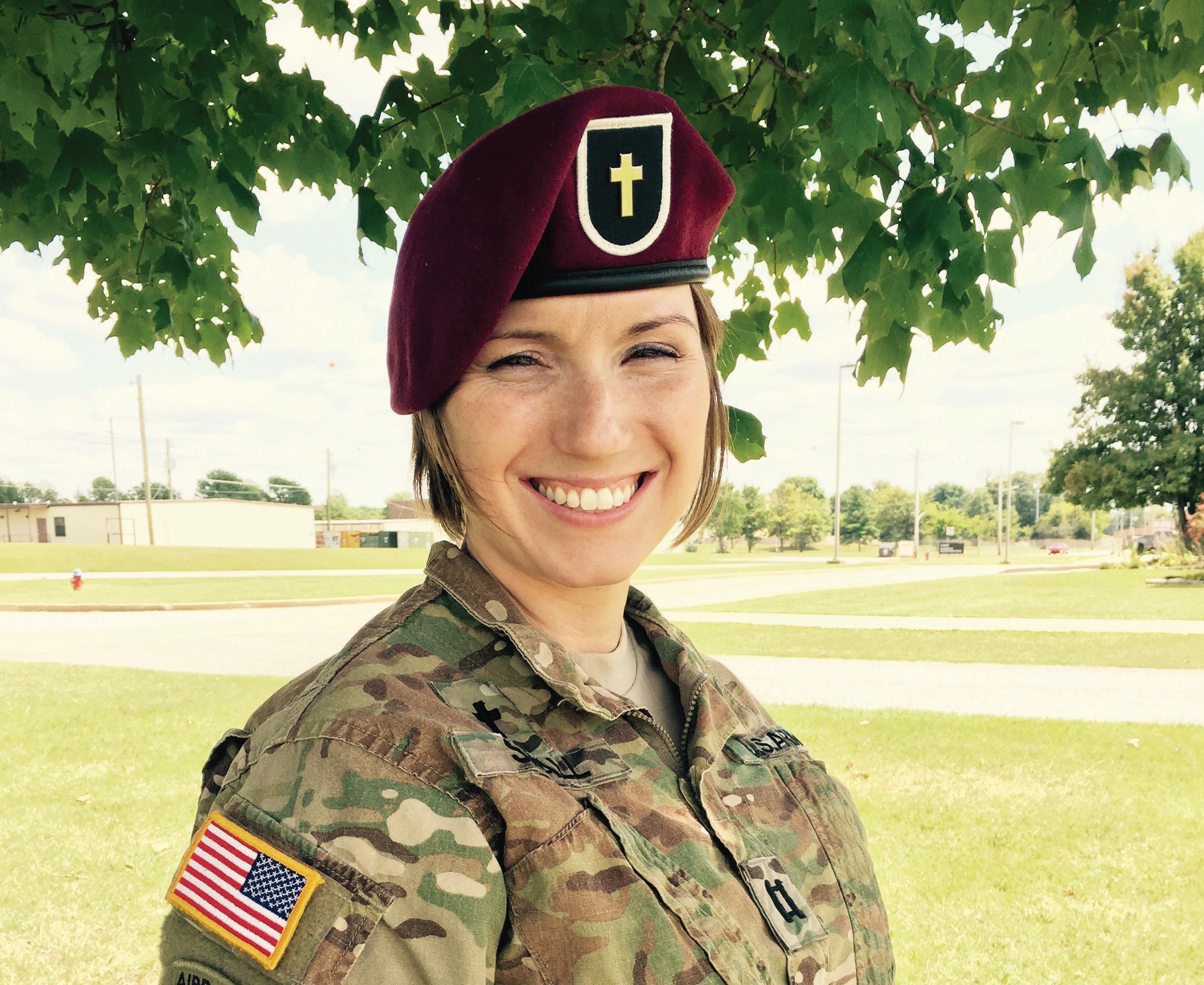











THE SAN DIEGO VETERANS COALITION IS A COALITION OF OVER 150 UNIQUE NON-PROFITS, BUSINESSES, GOVERNMENT AGENCIES AND EDUCATIONAL ENTITIES ALL UNITED BY THE GOAL OF SUPPORTING MEMBERS OF OUR COMMUNITY WHO SERVED OUR COUNTRY IN THE ARMED FORCES, THEIR FAMILIES, AND THEIR CARETAKERS.
The San Diego Veterans Coalition was organized in 2009 and incorporated as a non-profit on May 24, 2011. Using the Collective Impact Model, SDVC is a premier San Diego County-wide monthly convener of over 150 unique member and participating organizations, businesses, and agencies, as well as convening many of that body in our four action groups, and other activities and events. The Collective Impact Model is based on leveraging relationships with other veteran and family serving organizations so that we may provide veterans and their families with a complete array of services and other opportunities.
Many of the organizations that belong to SDVC specialize in one field (education, housing, employment, healthcare). Knowing what services each other provides, we can offer comprehensive support to our local Veteran community. We are proud to work alongside a wide variety of non-profit and for-profit organizations, as well as governmental agencies and individuals. The SDVC is a catalyst that inspires collaboration and cooperation among service partners to deliver premier support for Veterans in the San Diego region and beyond.


SDVC is proud to have partnered with ONWARD OPS, which has partnered with the Veterans Administration, the Department of Defense, and local communities to support service members through the process from military to civilian life by matching them with one-on-one sponsors in their specific community.
ONWARD OPS Sponsors all complete a VA-Certified Sponsor Training Course and the Community Integration Coordinators are all validated as best-in-class, trusted, and capable partners in their local region. Our national network, working with the department of defense, the department of veterans affairs, and the department of labor, brings a team together in one common mission: to securely provide the information and relationships needed to help every transitioning service member successfully make the journey out of the military and into civilian life.



Put down roots, even on the move. Use you VA home loan benefit and start Owning the PCS.
Whether it’s your PCS or your ETS, there’s never a wrong time to put down roots.
Not only will buying a home help you build equity, but your VA home loan requires no money down - plus we’ll waive your $1,440 lender fee.* And in some areas, owning a home is actually cheaper than renting.
You’ve stood strong for our country. Now it’s our turn to stand strong for you. Whether buying your first home, refinancing, or securing your retirement nest, Team Tawy at RATE makes your mortgage journey smooth, affordable, and stress-free. Enjoy the rewards of your VA benefit with local San Diego experts.
• VA Loan Experts — San Diego-based guidance
• No Lender Fee at close — save $1,640
• Specialized VA Underwriters for Veterans & Active Duty
• Competitive Rates & Flexible Terms (as low as 5.625% 30-year fixed, 5.75% APR on August 26, 2025)

• NO minimum FICO score
• Loan Amounts up to $4M

• No appraisal, no income docs — streamline and close faster
• No out-of-pocket expenses
Special Offer for San Diego Veterans
FREE Appraisal on a home purchase or refinance through December 31, 2025
Your service deserves more than a thank you—it deserves a financial partner who puts you first.
Contact Team Tawy now for a free consultation
Helping Heroes Achieve the American Dream of Homeownership.



rate.com/mohamedtawy mohamed.tawy@rate.com
12625 High Bluff Dr Suite 110, San Diego, CA 92130

Whether it’s your PCS or your ETS, there’s never a wrong time to put down roots. Not only will buying a home help you build equity, but your VA home loan requires no money downAnd in some areas, owning a home is actually Apply on line and receive expert advice parency, including rates and payments. Proud partner of the USO We are one of a small group of lenders that and their USO Pathfinder® program. Great savings & choice We waive the lender fee ($1,440) and have scores of 550 and up.



Receipt of application does not represent an approval for financing or interest rate guarantee. *Restrictions may apply, contact Guaranteed Rate or Mohamed Tawy for current rates and more information. CA: Licensed by the Department of Financial Protection and Innovationunder the California Residential Mortgage Lending Act. Mohamed Tawy NMLS ID: 450660, AZ1018822, CA -CA DFPI450660, CO - 100522433, CT - LO-450660, DC - MLD450660, FL - LO81708, GA - 450660, HI -HI450660, ID - MLO-2080450660, IL - 031.0065248, KS - LO.0049014, KY - MC738712, LA - Licensed, MA - MLO450660, MD - Licensed, MN - MNMLO-450660, MO - MO-450660, MT - 450660, NC - I194568, NH - Licensed, NJ - Licensed, NV - 69645, NY - Licensed, OR - Licensed, TN - 227350, TX - Licensed, VA - MLO- 62142VA, WA - MLO-450660 Guaranteed Rate Inc.; NMLS #2611; For licensing information visit nmisconsumeraccess.org

appraisal on home purchase In honor of your service and to show our gratitude, a FREE Appraisal on a home purchase or refinance 31, 2025.



















Benefiting Active Duty, Veterans, and Their Families

per foursome
1 golfer per foursome registers and pays for the group (names may be added later)
MEMORIAL GOLF COURSE - CAMP PENDLETON
AM Registration 09:30 AM Colors 10:00 AM Shotgun / Scramble Format
4-Hole in One Contests Silent Auction Team Awards Heavy Hors d'oeuvre Sponsor an Active Duty Player or Foursome





https://vetctapgolf.org
By Chris Martin
After multiple deployments, Chuck Rotenberry sustained a serious combat injury and was awarded the Purple Heart.
The Marine veteran now trains canines with the U.S. Secret Service while his wife and caregiver, Liz, works as the director of caregiver engagement at the Elizabeth Dole Foundation.
Liz advocates not only for herself and her family, but for all 5.5 million military and veteran caregivers nationwide. She serves as both a teacher and mentor to many of those caregivers across the country, and she and her husband are among the visionaries participating in MOAA’s TotalForce+ conference, which runs Oct. 28-29 in National Harbor, Md.
Q. What message are you bringing to TotalForce+?
A. As a wounded warrior veteran family, we hope to bring the understanding that, while we are strong and resilient, it is important to highlight the crucial role that mental and emotional wellness plays in maintaining a supportive military family.

Liz connected with MOAA ahead of the event to discuss the critical opportunities TotalForce+ will provide. This interview was edited for length and clarity.
Q. What challenges are you eager for TotalForce+ to tackle?
A. First, we hope to see a stronger conversation about the challenges our families face during active duty and when transitioning to veteran or wounded warrior life — especially for our enlisted personnel.
Second, it is essential to address the stigma associated with accessing specialty mental and emotional health care that impacts our community. Our families should feel empowered to seek the support and resources they need to strengthen their family. A supported
By Chris Martin
This is the first time in my life where I don’t know how I’m going to die,” said Brad Bonar, who recalls having thoughts of suicide since at least the sixth grade.
“That’s not an option anymore. You know, I have something that’s bigger than me,” he told MOAA in an interview ahead of his appearance at TotalForce+.
Bonar is the founder and CEO of 1 Degree of Separation, an international suicide prevention training program that uses comedy to address depression and self-harm. His troupe will put on a show at MOAA’s inaugural people-focused conference, taking place Oct. 28-29 in National Harbor, Md. He spoke to MOAA about how to find humor when discussing difficult topics. This interview was edited for length and clarity.
Q. What excites you about TotalForce+?
A. There’s value in what we do — this is real suicide prevention training. It’s really triage for mental health. And what better group than a gathering of veterans at TotalForce+? Because suicide, it’s preventable, and the first part is, you need to learn how to talk about it.

Q. What is your typical show like?
A. We answer several questions. The first one is: What does your depression feel like physically?
Just like an accident, if somebody was injured, you want to know where it hurts. It’s not about your feelings or emotions. Instead, what does your depression feel like? Where does it hurt? This acknowledges the depression is something real.
The second question is: What do others do that makes it worse? We talk about how people mean well but aren’t always helpful.
TOTALFORCE+ SPEAKER SPOTLIGHTS
Scan the QR code to find more interviews with TotalForce+ featured speakers.
family means a supported servicemember — and ultimately higher retention and a stronger tradition of service generationally.
Lastly, we would like to express our gratitude for the opportunity that we have had as a military family, and share how that helped shape where we are today. We faced many challenges throughout Chuck’s military career and transition as a wounded veteran family, but we also achieved many successes. It is key to highlight and celebrate those wins for the greater good of supporting this community.
Q. How can families work together to help military children?
A. By creating a strong and supportive community that will allow our families to thrive with the support and resources they need, especially for mental and emotional care. Seeking this kind of care should not negatively impact future service interests or eligibility. An essential part of this is increasing the education and awareness on the impacts that invisible wounds have on our servicemembers and families.
Then there’s the gratitude question: What do others do that makes it better?
The next question is: What do you do that makes it worse? And then the last question, which is the positive point: What do you do that makes it better? We talk about individual and group therapy as well as inpatient and outpatient care. We talk about what medications do, and what we like and don’t like about them. We talk about having a core group of friends you can check in with.
We laugh, somebody cries, it’s emotional. It’s raw.
Q. There’s always a bit of truth to comedy. How has that outlet helped you?
A. We’ve been doing this show for 6½ years. This is the first time in my life where I don’t know how I’m going to die. I’d always known I would take my own life.
That’s not an option anymore. I have something that’s bigger than me.
Our title of the show, A Funny Look at Depression and Suicide, is a little disturbing, and we kind of wanted that because it’s a dark topic and we want to warn people. We’re called 1 Degree of Separation because if you don’t struggle with depression, you at least know somebody who does. We’re all connected to this.
Your Attendance Is Mission Critical
TotalForce+ brings together a powerful group of attendees from across the VA and DoD communities, providing many opportunities to connect, collaborate, and find real solutions to the challenges that matter most to you.

Scan the QR code to find out more and register for the conference.

The Roast & Toast will be an evening event on the first night of MOAA’s Total Force+ conference that will benefit The MOAA Foundation’s Crisis Relief Program Featuring: Panelist and host of the TotalForce+ Roast & Toast ROB RIGGLE
FREE for those currently serving military/uniformed servicemembers and their spouses








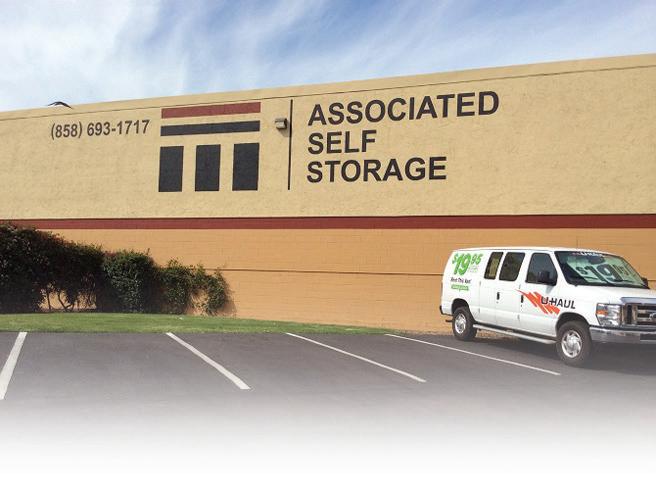












By Amber Robinbson San Diego Veterans Magazine
When I asked to go on a ride along with the San Diego Police Department, making a special request for any veterans-turned-cops, I expected a really serious, possibly dangerous, afternoon of shadowing our city’s toughest crime fighters.
What I got was an afternoon of heartfelt service to our San Diego community, honorable humility and a lot of respect.
When I asked whether former Marine Sergeant Major, Mark Wright, and his partner, former Marine Staff Sergeant, Sean Bunch, had rank or titles he said their titles were just San Diego police officers. They are relatively new partners, but act like they’ve known each other for years, which is usually the case when you get Marines together.
Wright is a newer addition to the force, coming on board two years ago, with Bunch only having two years left.

Currently, these brothers-in-arms spend their days patrolling the entirety of Balboa Park.
Although neither men are taking fire or kicking in the enemy’s door on this beat, like during their time in Iraq or Afghanistan, they still work hard to serve their local community. Service which can range from tracking down criminals to answering questions from lost pedestrians, to giving out stickers to kids and never backing down from a chance to turn on those flashing red and blues just to make one of them smile.
Most of our particular day was cruising around beautiful Balboa Park running car tags to see if they were current, from cars not displaying proper plates and placards to those double parked. Bunch says they often catch parole violators or even stolen cars doing just this. I was struck as I watched both officers go out of their way to look in and around vehicles to find plates or disability placards not displayed correctly so as to avoid issuing superfluous tickets.
“We try to give everyone the benefit of the doubt,” said Wright. “We’re not out to get anybody.”
Although, both officers confirm that enforcing even the most basic of park rules can yield large payoffs. During a recent patrol Bunch spotted an individual smoking in the park, which is illegal. As he circled back round, the individual turned and rapidly tried to walk away, which activated immediate suspicion. He was detained and came back with a warrant for numerous kidnapping and child molestation charges.

Both men say a lot of what they do is talk with museum owners and those living in the neighborhoods surrounding the park about their concerns. A shared concern by all is the park’s homeless population.
Bunch says their posture towards the homeless is mostly that of assistance, adding there are many resources available for those who would take them.
The city spends a lot of money on resources,” said Bunch. “The biggest problem we run into is whether or not the [homeless] people want them, and a lot of them don’t.”
Thus, the men tend to run into the same issues with the same people pretty often. Although frustrating, they have learned that respect goes a long way when challenged with these repeat offenders. Bunch recalls spotting one such offender in the park, who was in violation of his parole and wanted on warrant. He was unable to get to the offender immediately, but still apprehended him with a verbal request. The parolee waited patiently to be hand-cuffed and arrested, simply out of the respect he held for the law man.
“Being respectful of everyone despite their lot in life goes a long way in this job,” said Wright.
Both men say a huge part of their work is being able to connect and communicate with the myriad of people they meet daily.
Bunch says he feels he and Wright are lucky to come to the force later in life, given it means they have a wider frame of reference for those they meet and serve daily. “We deal with people who are going through all kinds of things in life,” said Bunch. “And it’s helpful to be able to say, ‘hey I know what you are going through, I’ve been there.”
As the day progressed, I realized that both gentlemen definitely had a long list of tough and unique life experiences to pull from. Both proudly served the United States Marines for years, traveling to war and all over the world, experiences that yield much wisdom as well as many a story.

Bunch, for instance, did not come to the force straight from the Marines, but from Hollywood. Surprisingly, he is a member of the Screen Actors Guild, working as a military advisor on various productions, like Lonestar 911, and appearing in some as well, such as one of the most recent Men in Black movies.
“I grew up outside of LA,” said Bunch. “So, I’ve always just kind of been around the business and found a place for myself there with all my military experience.”
Bunch hopes to return to work in Hollywood after he leaves the force, bringing with him a new level of experience and respect.
Wright, who retired from the Marines as a Sergeant Major never worked in Hollywood, but he does have plenty of stories about being a proud grandfather, father and new amputee. When I entered the Central Division Station and met him, he said he was just getting back to work after some time off after losing his leg.
Wright remained unscathed during his over-20-years in service, overseas deployments and endless combat train ups. It wasn’t until after service that he lost his leg in a motorcycle accident late one foggy night a little over a year ago. Wright says it had been an eventful second watch and he was leaving the station about 2 AM on his motorcycle when it happened.
“It was only about two minutes from work,” said Wright. “I was coming around a curve and entered into what I thought was fog, and as I’m entering, I see a headlight and side mirror in my lane.”
That headlight and mirror became an entire car that was blocking Wright’s entire side of the road.
“I was a heuy crew chief in the Marines and reverted to my training from that, grabbed my shoulders, braced for impact and went flying like a human lawn dart over my handlebars,” said Wright.
Wright landed in the ditch on the side of the road. He says he realized immediately that he had a back and leg issue. He learned that a bystander had called 911, but he requested they call back and state that the injured motorcycle rider was a policeman with the San Diego Police Department and expedite services. This one request would become pivotal in saving Wright’s life.
Continued on next page >
“What I didn’t know at that time was that I had severed two arteries in my leg, and I was bleeding out,” said Wright.
What Wright would learn later is his heel had also been torn off on the wrecked car as he sailed past it into the ditch. After much pain and many surgeries, Wright would finally lose his leg from the knee down. says he doesn’t let it get him down, though. He’s proud to continue to serve as one of our city’s finest.
Both he and Bunch take much pride in their time as Marines and as San Diego Police Officers. Each officer comes from strong military stock, with Wright’s grandfather being a World War II veteran and Prisoner of War and Bunch’s father a decorated veteran of Vietnam.
All in all, this Army vet’s afternoon with two Marines was an impressive one. Both seasoned public servants, these honorable men have discovered you must give respect to get it, that violence is often not the answer and the most important thing to keep in mind along the way, is a good, human dose of empathy.

more information visit www.joinSDPDnow.com or email us at SDPDrecruiting@pd.sandiego.gov


Empowering soldiers with the mental health skills and tools to reinforce suicide protection


















